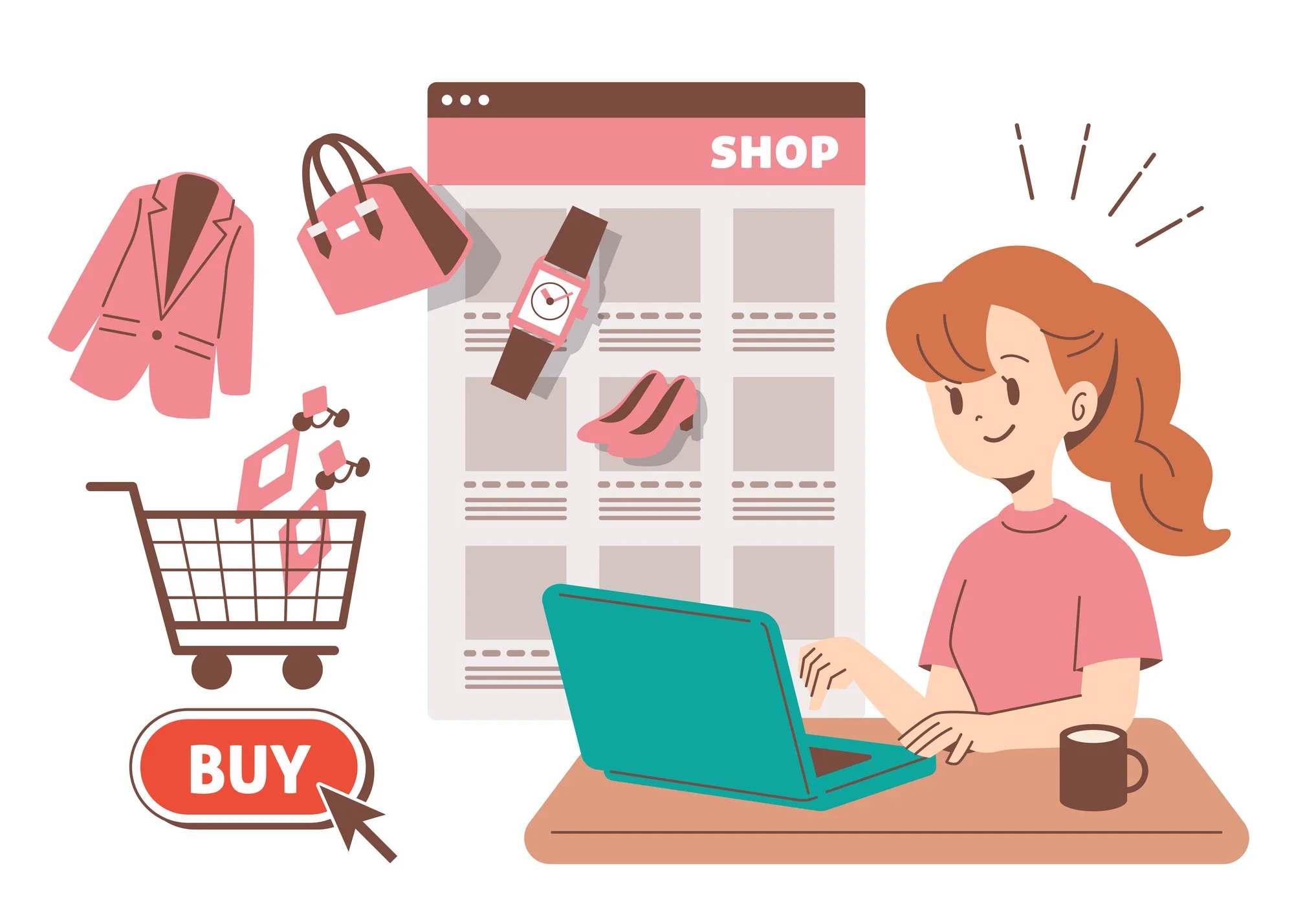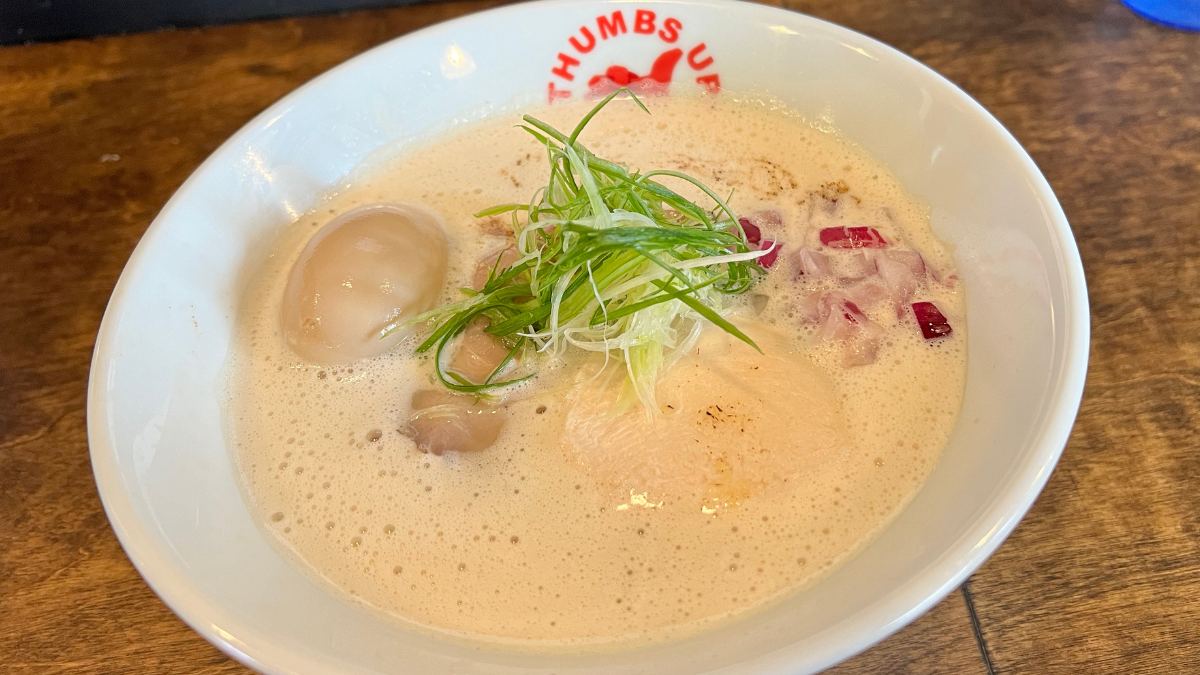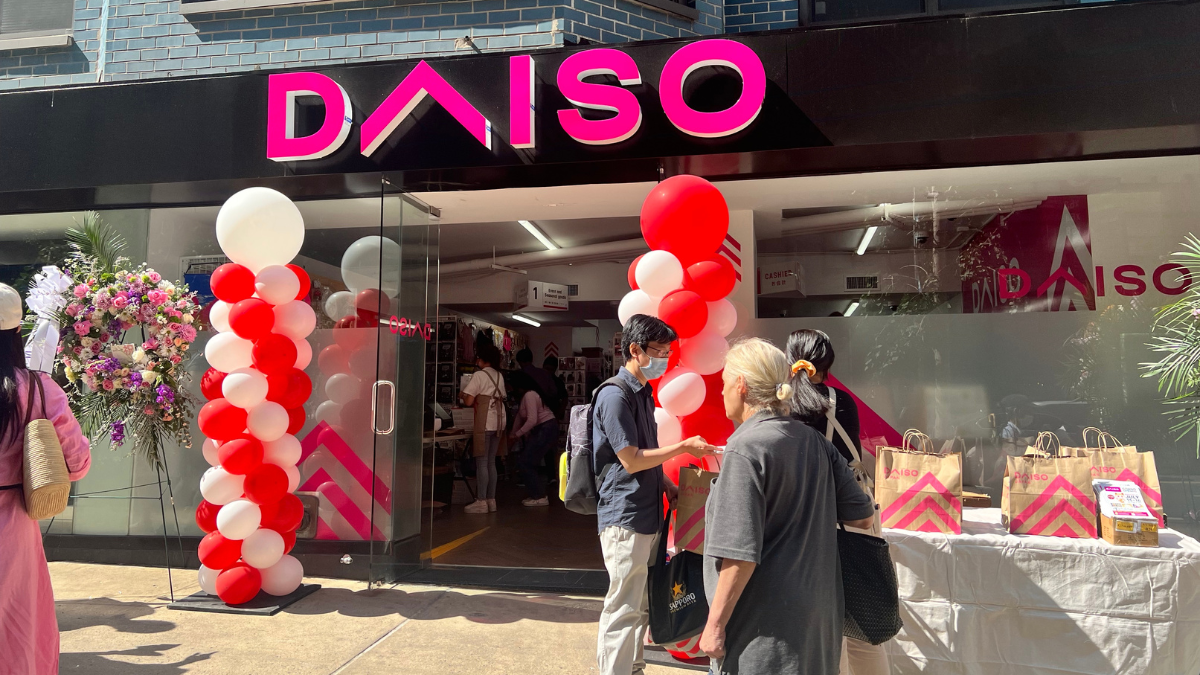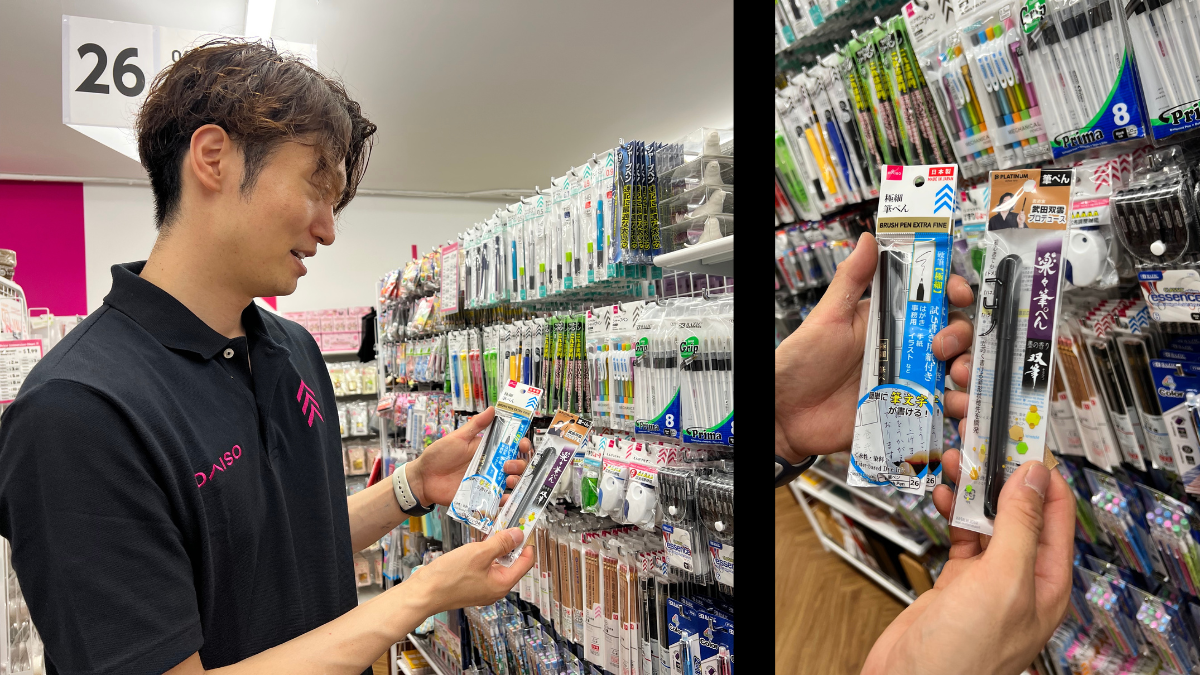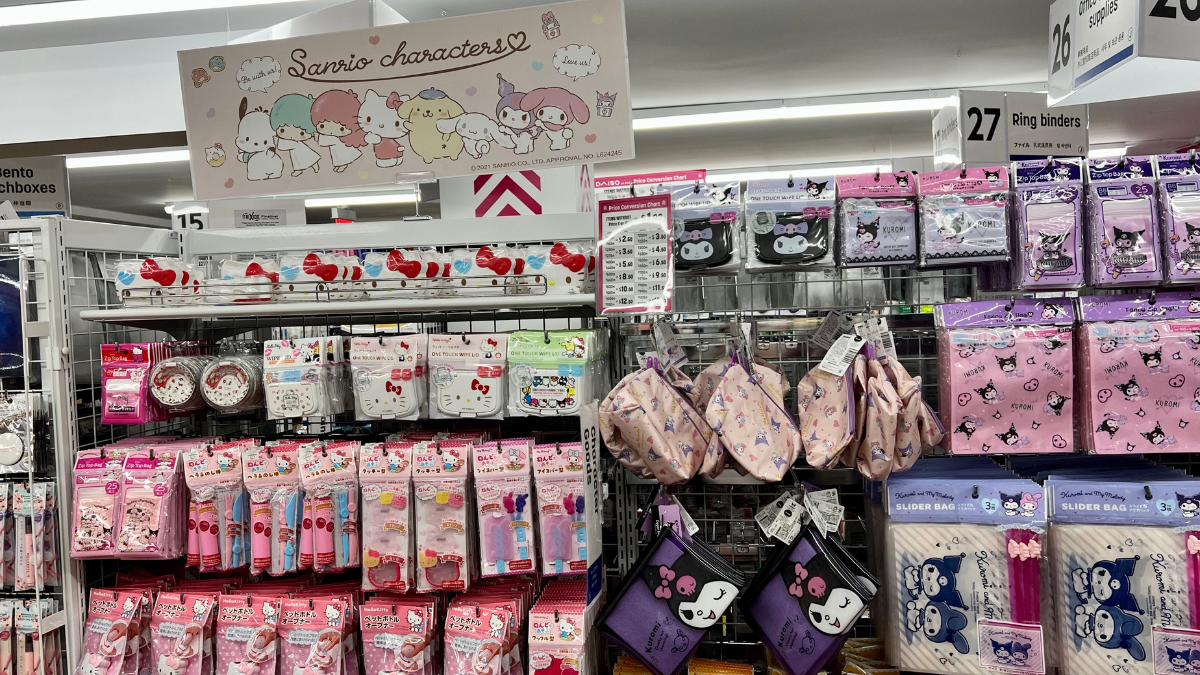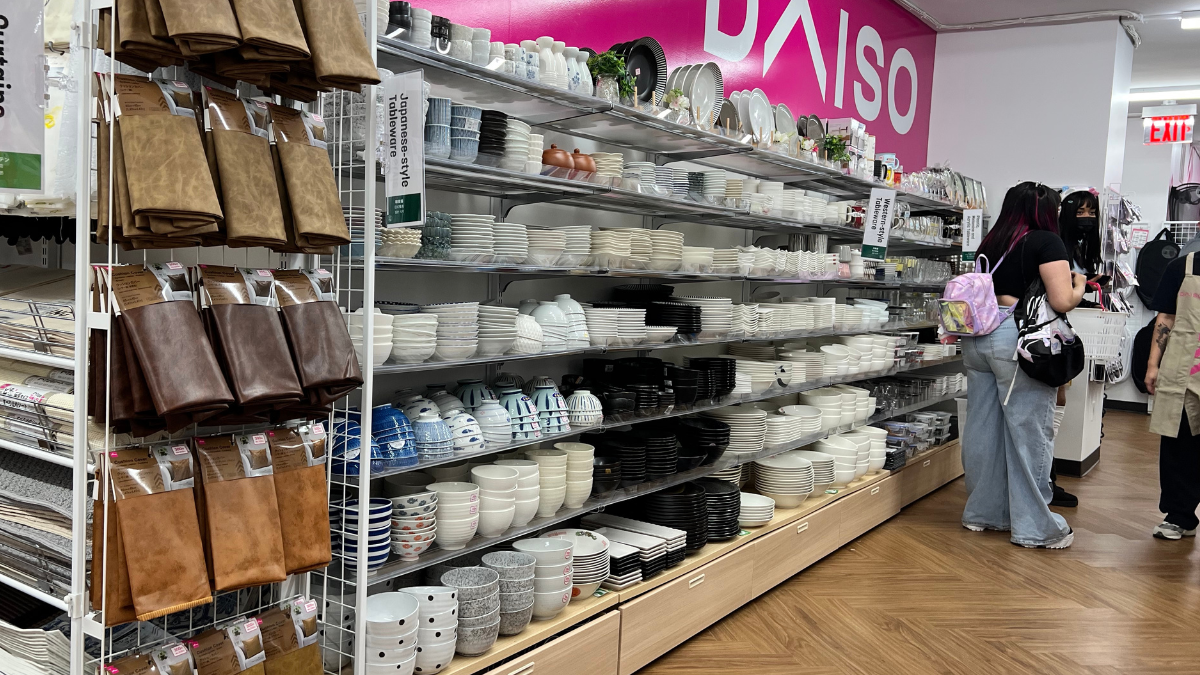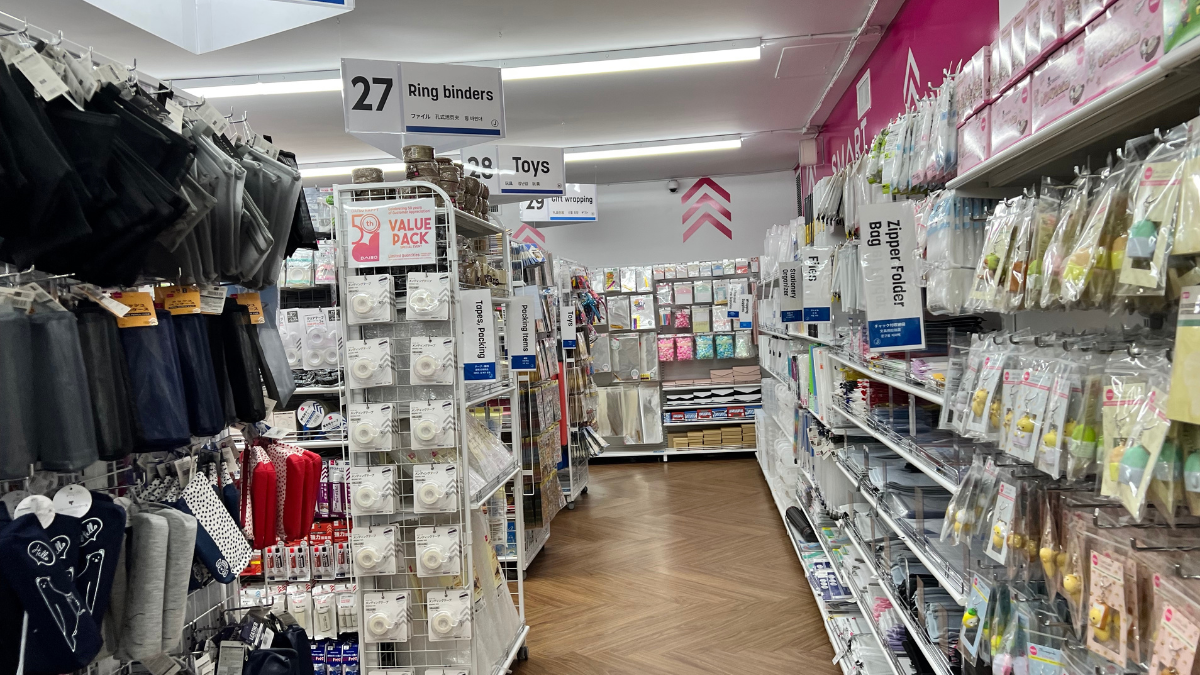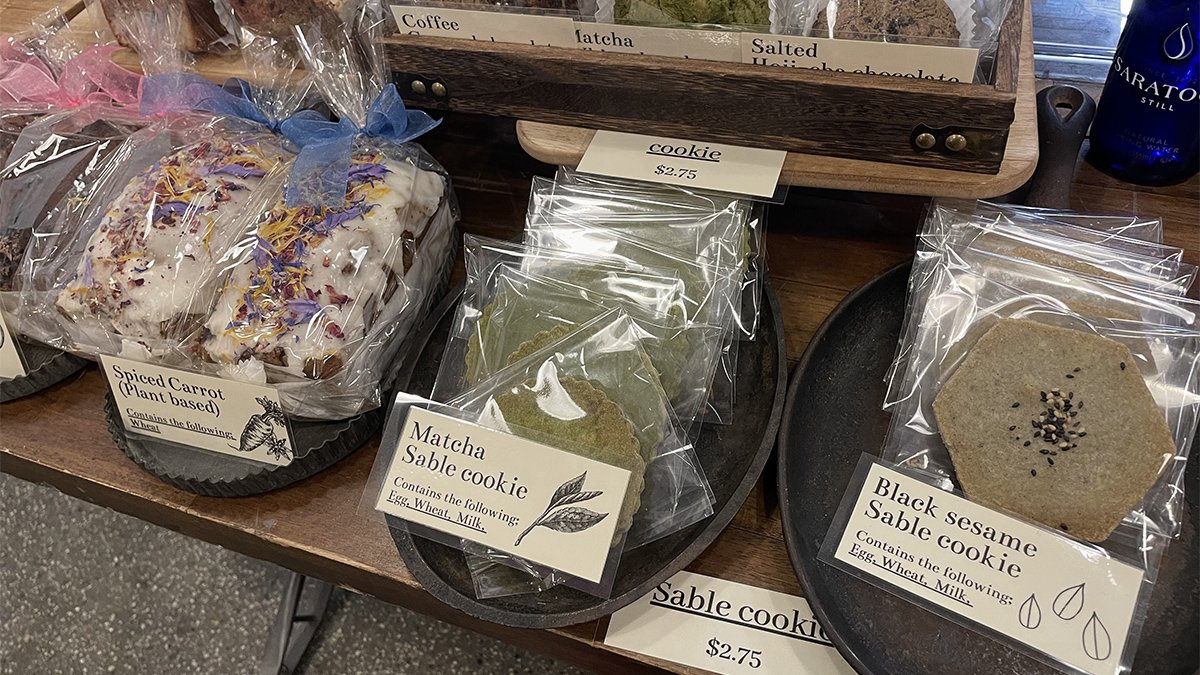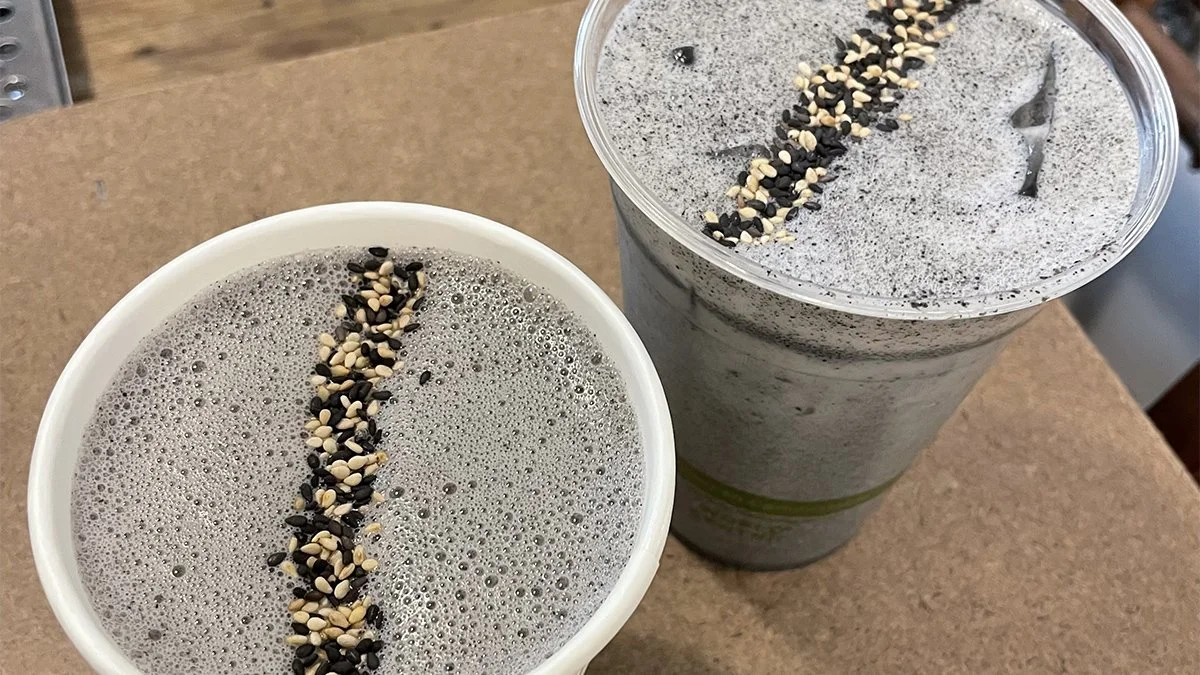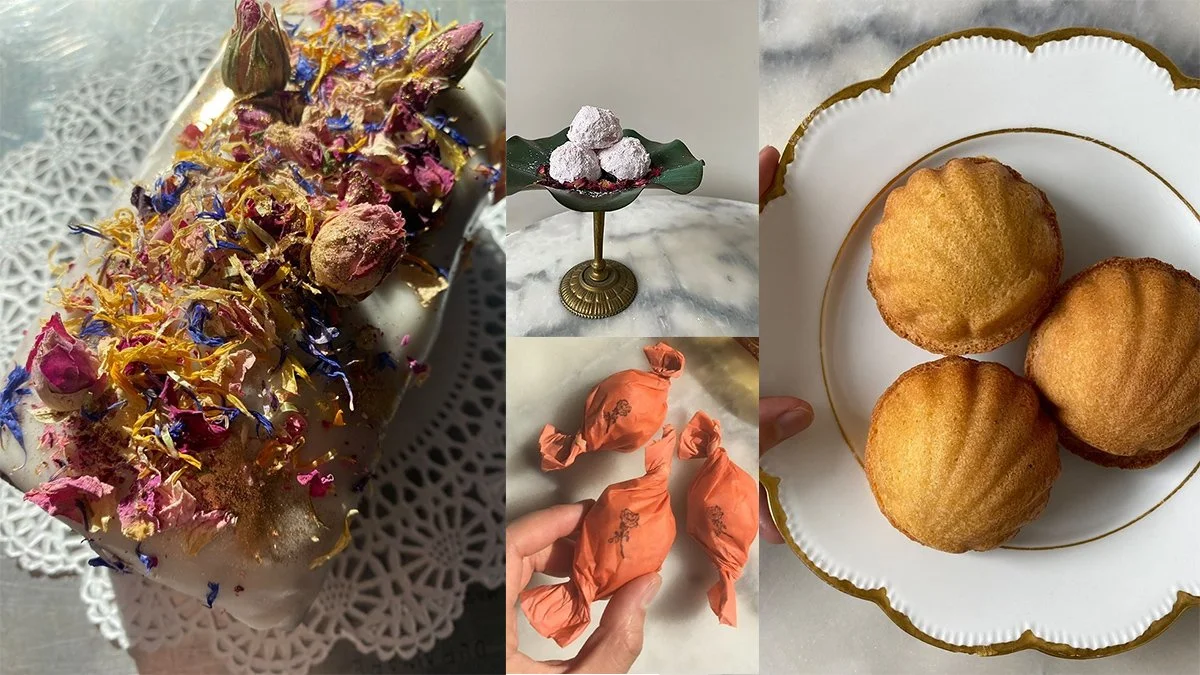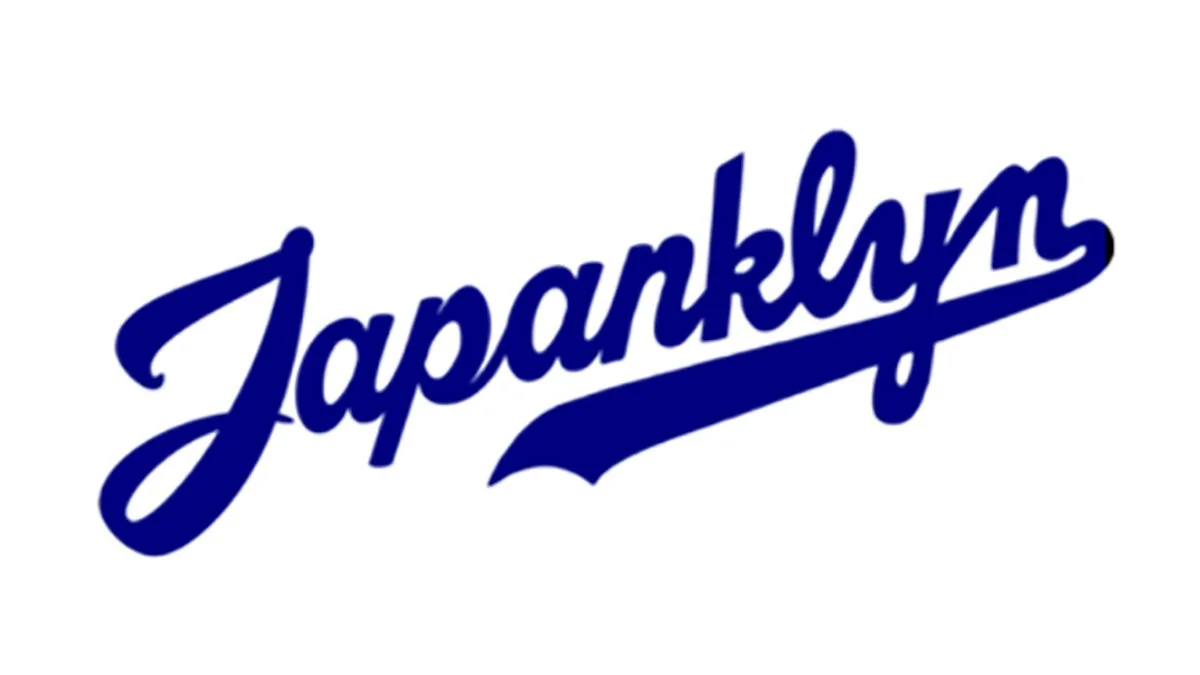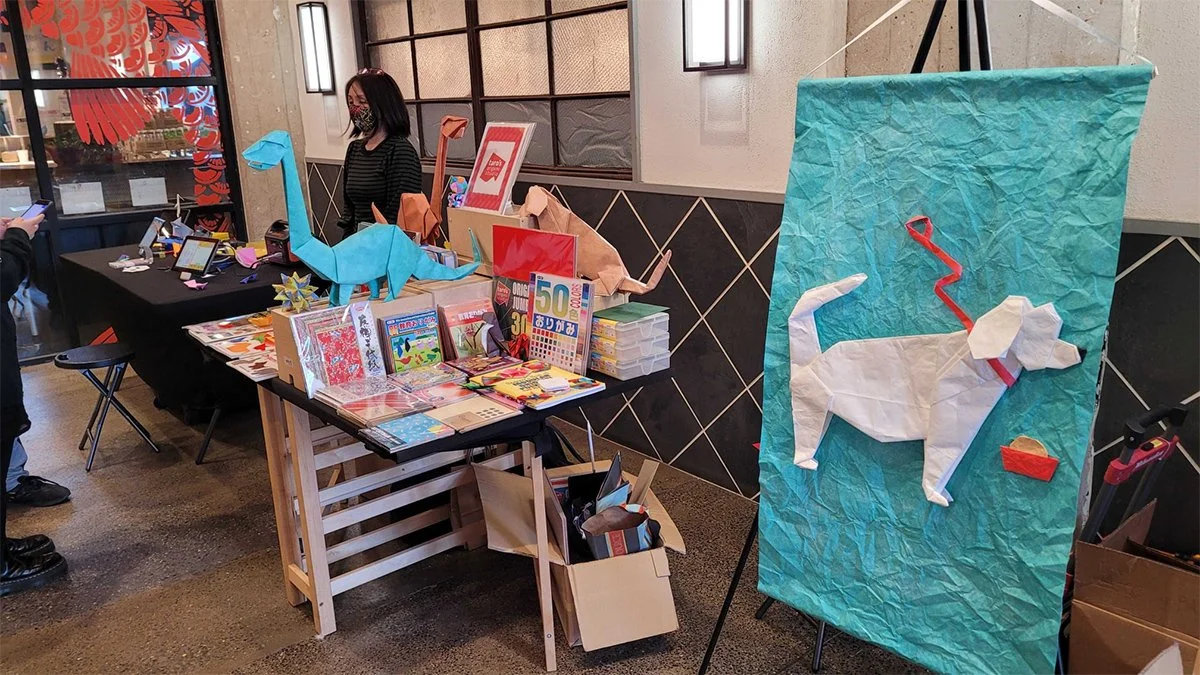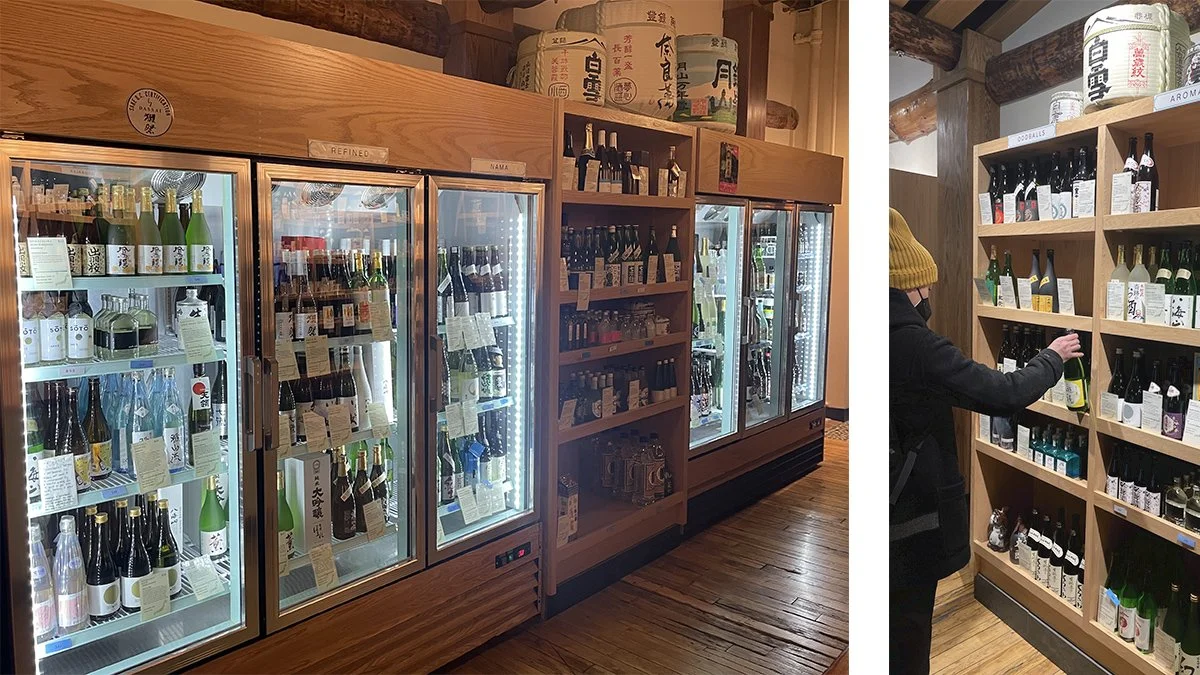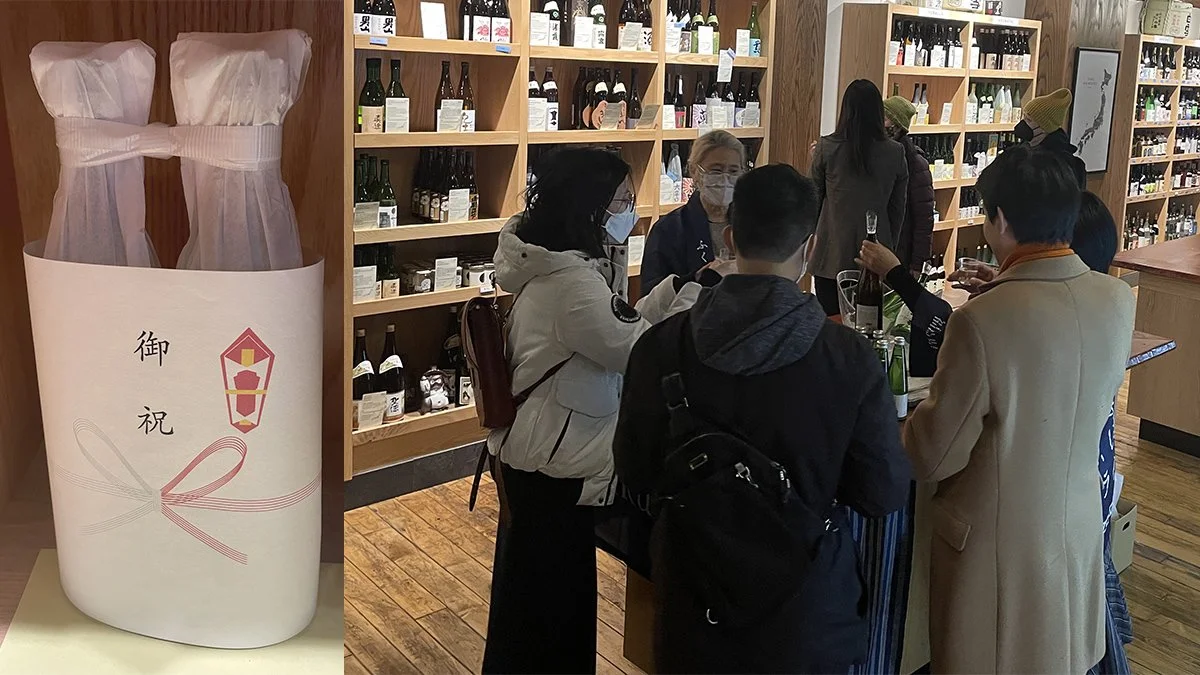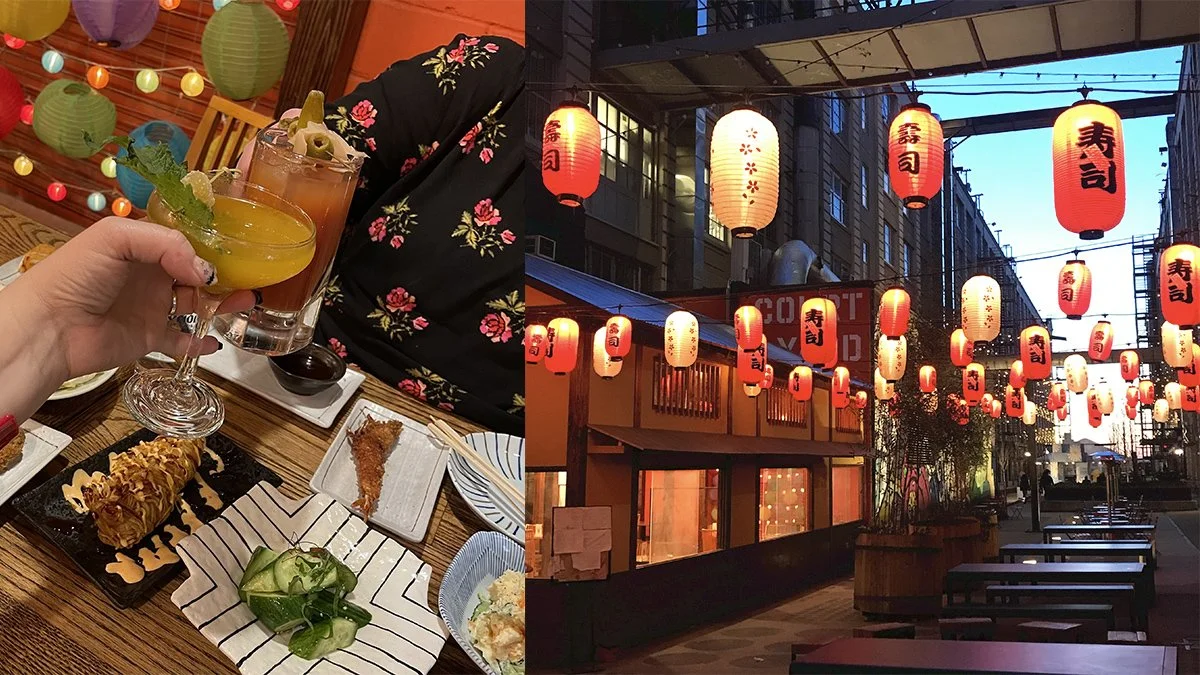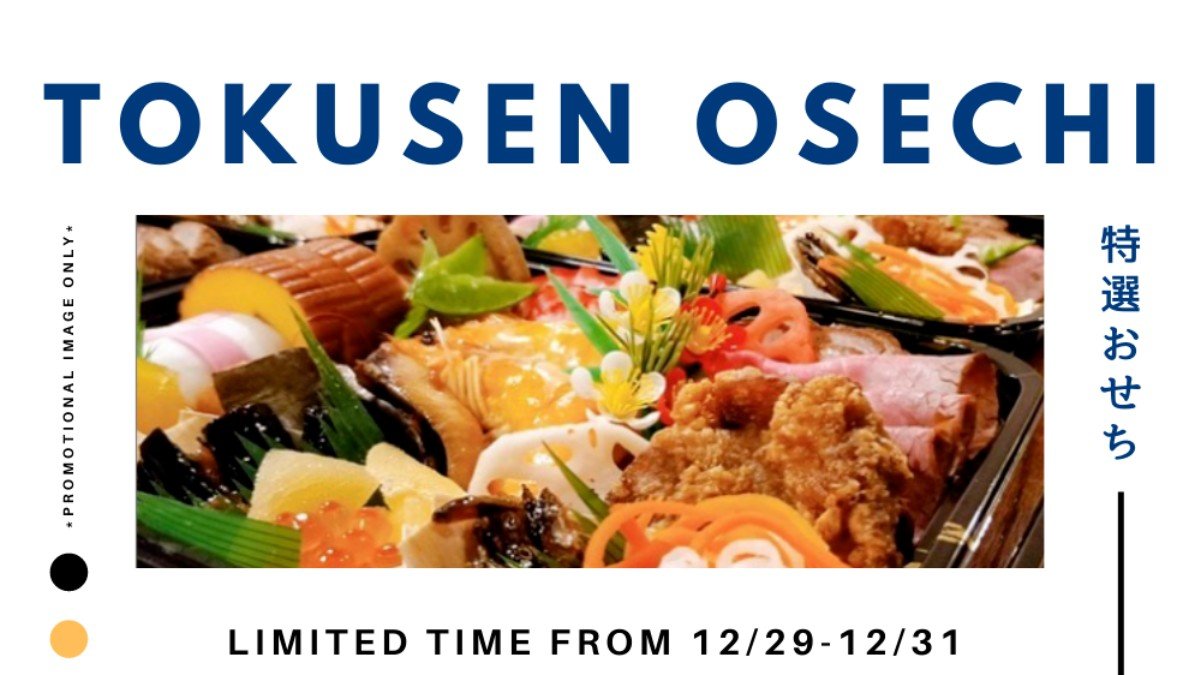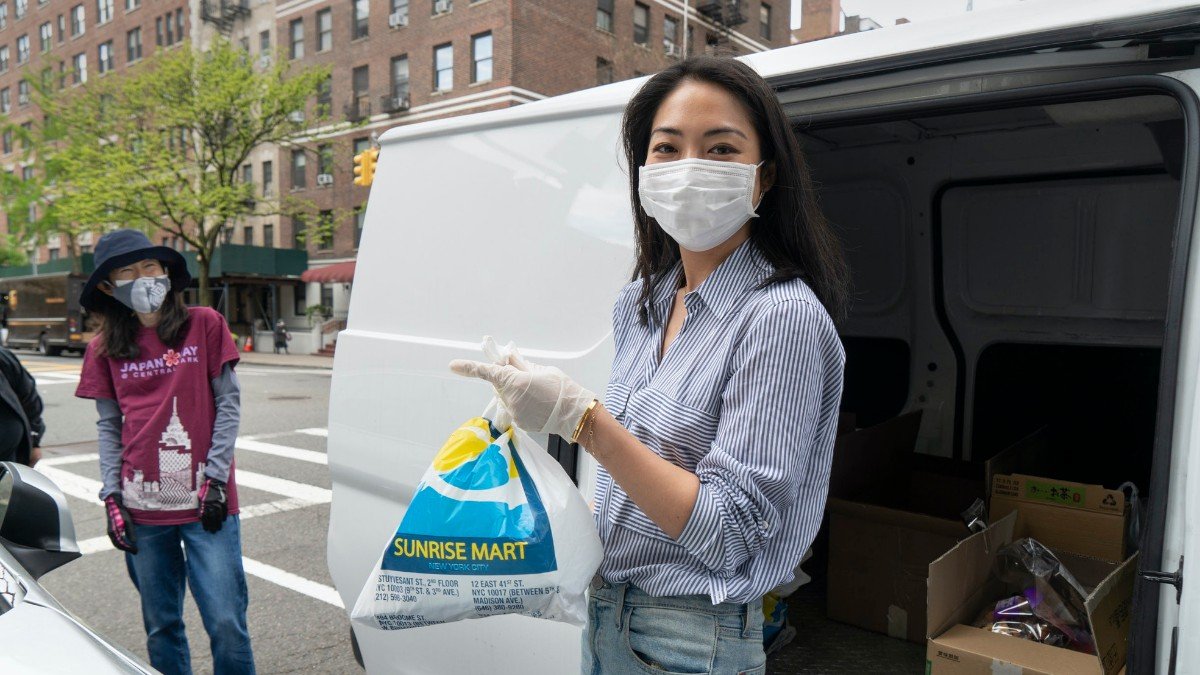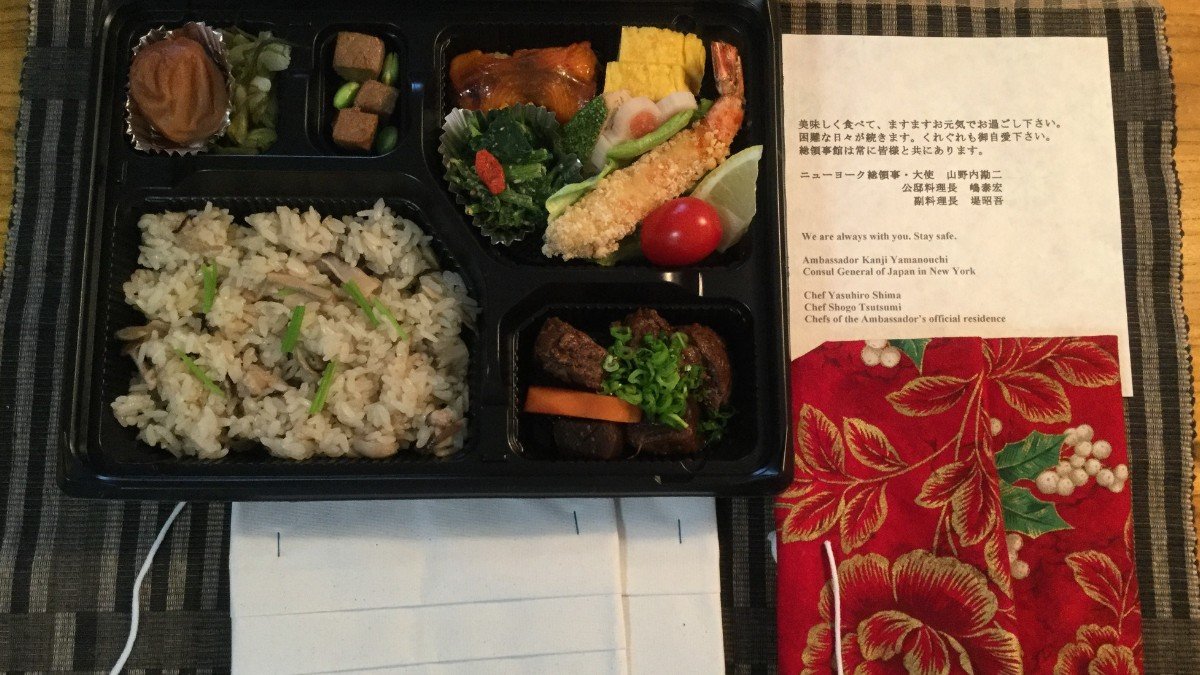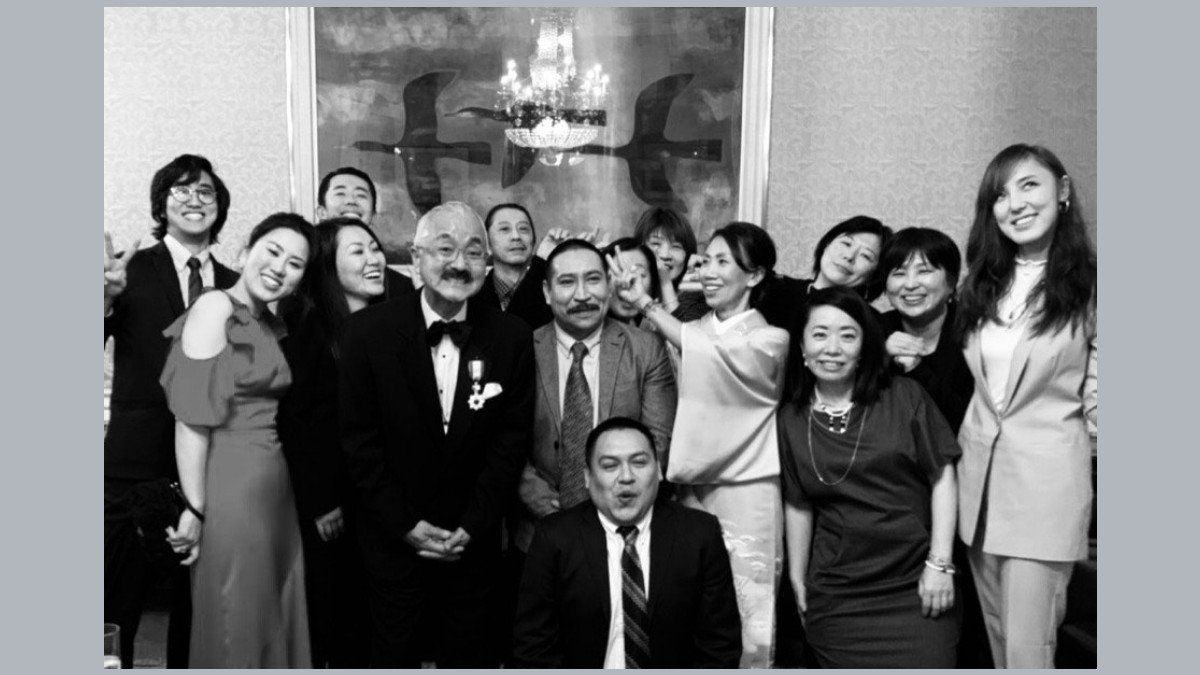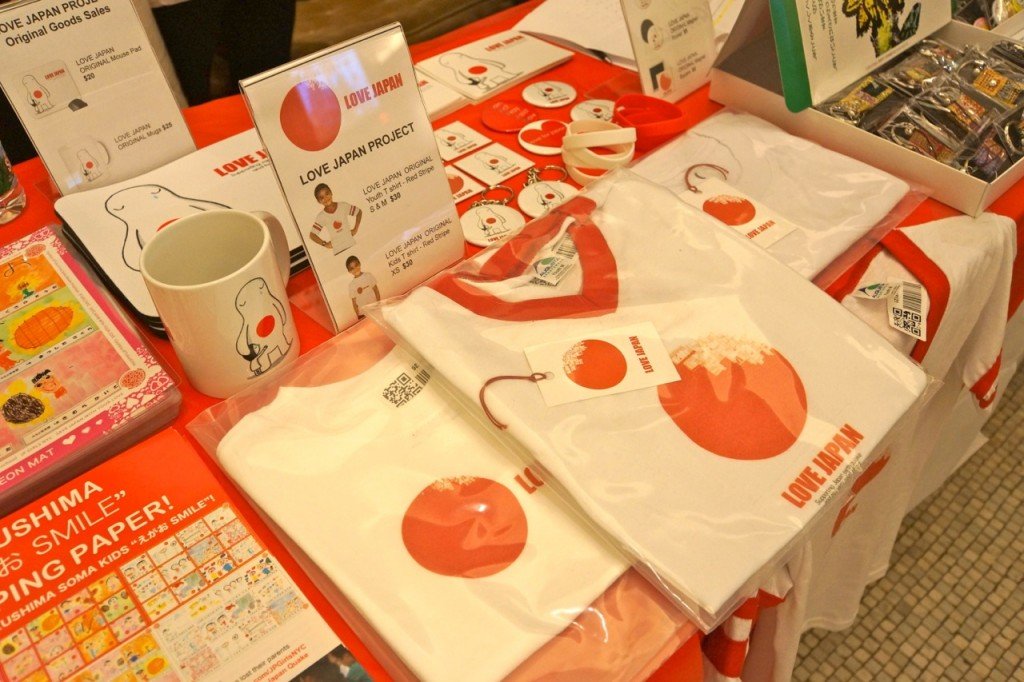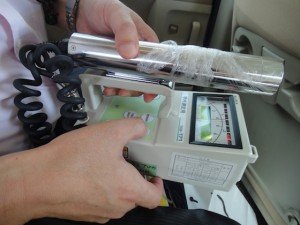the zen of shopping with zenplus
This listing is made possible by ZenPlus.
The internet has made the world smaller. People connect globally through social media platforms. Accessing information about other countries and cultures is a breeze. Even ordering your favorite products from Japan is easier with ZenPlus.
ZenPlus is a Japanese online marketplace that offers more than three million authentic products by 1,400 companies in Japan to customers all over the world. Three million.
What Kind of Products?
You can find practically anything you want on ZenPlus. Anything. Clothing and accessories, health and beauty, home and office supplies, even food and drink are among the categories of items on the website. And within these categories are even more specific subcategories.
As New Yorkers, we’re lucky to have plenty of goods from Japan only a subway ride away. You can find anime, manga, and action figures in New York City, but there are hundreds that aren’t available here. As I browsed through the ZenPlus website, I found fascinating things that I didn’t realize I could buy online from Japan.
Hanging scrolls and a sleeping bag with sleeves? Check. Shogi board games and fishing reels? Check. All the Kit Kat flavors from Tokyo Banana to cheesecake can be yours, as well as a tambourine shaped like a koala. The possibilities are endless.
How Does It Work?
The Osaka-based company acts as a liaison between the customer and the companies they represent. ZenPlus understands that Japanese culture and products are revered around the world, so they make it easy for customers in hundreds of countries who need to communicate in languages other than Japanese.
Go to the ZenPlus website. Create a free account and shop online as you would with any e-commerce platform. Choose your shipping and payment methods, and you’re done. Shipping may take several days to several weeks depending on the method you choose, standard or express.
Explore ZenPlus and find the world of Japan at your fingertips. As ZenPlus says, “You don't need to be in Japan to shop like the Japanese.”
This listing is made possible by our generous sponsor, ZenPlus.To learn more about ZenPlus, please visit https://zenplus.jp/en/.
Blue Note Presents Hiromi: The Piano Quintet feat. PUBLIQuartet
Japanese jazz composer and pianist Hiromi returns to New York to perform four shows at Sony Hall (235 W. 46th Street), on November 29 and Wednesday, November 30 at 7:00 p.m. and 9:30 p.m. (presented by Blue Note). Hiromi will take the stage with the Grammy-nominated PUBLIQuartet, which is known for its imaginative approaches to contemporary classical, jazz, and world chamber music.
Tuesday, November 29 and Wednesday, November 30 at 7:00 p.m. (Doors at 5:30 p.m.) and 9:30 p.m. (Doors at 9:00 p.m.)
Sony Hall – 235 W. 46th Street (between 7th and 8th Avenues)
General Admission: $45 Advance | $50 Day of Show
VIP Reserved Seating: $65
Japanese jazz composer and pianist Hiromi returns to New York to perform four shows in two nights at Sony Hall, presented by Blue Note. Hiromi will take the stage with the Grammy-nominated PUBLIQuartet, which is known for its imaginative approaches to contemporary classical, jazz, and world chamber music.
Tickets
To purchase tickets, please visit Sony Hall’s website. General Admission seating is limited and available on a first come, first served basis. VIP reservations include guaranteed seating in a designated section. This all-ages show will have a full dinner menu available.
About Hiromi
Ever since the 2003 release of her debut, Another Mind, Hiromi has electrified audiences with a creative energy that encompasses and eclipses the boundaries of jazz, classical, and pop, taking improvisation and composition to new heights of complexity and sophistication. On her new album, Silver Lining Suite, Hiromi further exemplifies her virtuosic hybridity and emotional range, finding strength and hope amidst the turmoil of the pandemic.
Born in Hamamatsu, Japan in 1979, Hiromi’s first piano teacher, Noriko Hikida, exposed Hiromi to jazz and introduced her to the great pianists Erroll Garner and Oscar Peterson. She enrolled in the Yamaha School of Music and started writing music.
Hiromi moved to the United States in 1999 and studied at the Berklee College of Music in Boston. Among her mentors was jazz bassist/arranger Richard Evans, who took Hiromi’s demo to his friend, the legendary pianist Ahmad Jamal. Evans and Jamal co-produced Another Mind.
Another Mind was a critical success in North America and Japan, where the album shipped gold and received the Recording Industry Association of Japan’s Jazz Album of the Year Award. Hiromi’s astonishing debut was but a forecast of the shape of jazz to come.
In 2009, she recorded with pianist Chick Corea on Duet, a live recording of their concert in Tokyo. She also appeared on bassist Stanley Clarke’s Grammy-winning release, Jazz in the Garden.
In the summer of 2021, Hiromi performed at the opening ceremonies of the Tokyo Olympics.
The Japanese-Themed Short Films of New York Japan CineFest
The New York Japan CineFest, a film festival that introduces Japanese-themed short films, is celebrating its eleventh year. The in-person screening tonight (November 14) at Scandinavia House features nine of the festival’s 21 films. Some guest directors are scheduled to appear on stage. To purchase tickets to the in-person screening, please visit NYJCF’s Eventbrite page.
The 11th New York Japan CineFest
In-person Screening on Monday, November 14 at 7:00 p.m.
Scandinavia House – 58 Park Avenue at 38th Street
In-person Tickets: $15 in advance; $18 at the door | Students: $12 in advance; $15 at the door
Online Screening from Tuesday, November 15 through Sunday, November 20
Online Screenings: $15 + suggested donation
New York Japan CineFest, a film festival that introduces Japanese-themed short films, is celebrating its eleventh year. The in-person screening tonight (November 14) at Scandinavia House features nine of the festival’s 21 films. Some guest directors are scheduled to appear on stage. To purchase tickets to the in-person screening, please visit NYJCF’s Eventbrite page.
Online screening will be available from Tuesday, November 15 through November 20 at New York Japan CineFest’s website. With the purchase of a Festival Pass, viewers in the US can watch all 21 short films in seven days. To register for the online screenings, please visit NYJCF’s website.
Mar Creation hosts the festival with partners CYBER New York, Japan Information and Culture Center (Embassy of Japan in Washington, D.C.), Short Shorts Film Festival & Asia, Sapporo International Short Film Festival, and Aichi International Women’s Film Festival.
Films
Veils
Dir. Erika Nakayama | 2021 | 17:57 | Drama | Japan
Ayumi Tani, an owner of a small bookstore, and Sayaka Murakami, a call center worker, are a lesbian couple living together. While They feel somewhat stifled by the fact that they are part of LGBTQ community, They are looking forward to having a wedding-style photoshoot to celebrate their anniversary.
Lost in Eden
Dir. Hakim Hayashi | 2021 | 14:31 | Drama | Japan
Rika, a young Japanese girl, lives with her new French husband, Isaac, in Paris. She finally manages to renew her residence permit after a long struggle with the chaotic French administration. Then a man from the Japanese Embassy brings a cruel reality to her: We have to deal with your parents’ situation. She faces a Cornelian dilemma.
Kurosawa’s Grave
Dir. Ben Lopez | 2021 | 13:47 | Documentary | United States
Viewed through the eyes of an expert cinephile, this pilgrimage to Japan and love letter to Akira Kurosawa will transport the audience to a moment where modernity meets nostalgia.
Kurosawa’s Grave
Dir. Ben Lopez | 2021 | 13:47 | Documentary | United States
Viewed through the eyes of an expert cinephile, this pilgrimage to Japan and love letter to Akira Kurosawa will transport the audience to a moment where modernity meets nostalgia.
Bigger Is Better
Dir. Larry Tung | 2021 | 24:57 | Documentary | Taiwan
Bigger Is Better is a documentary about the identity culture and body politics of the bear subculture within a larger gay male community in Asia. It takes the audience to Japan, Taiwan, Hong Kong, and China to meet with stakeholders and examines the development of this unique subculture and its meaning and impact.
I Love Today’s Sky
Dir. Kazuma Yano | 2022 | 6:26 | Drama | Japan
Do you remember yesterday’s sky? The sky always extends beyond your upward gaze. I love today’s sky where clouds scatter leisurely. This film is based on “I Love Today’s Sky,” Shuntaro Tanikawa’s new poem that describes a bright future.
MaTcH
Dir. Masaki Katsuyama | 2022 | 20:00 | Drama | Japan
Haruko, an old Japanese mother, goes to Tokyo from Osaka to see her 30-year-old son, Shuji. The purpose of her visit is to set up matchmaking for him because he is still a single man. However, Shuji already uses a matching app to find his partner.
The Voice Actress
Dir. Anna J. Takayama | 2022 | 15:06 | Drama | Japan
Kingyo, a veteran voice actress working in Tokyo, possesses a unique ability to see the soul in all things, living and inanimate. The voice acting world is changing, and Kingyo must find a way to reconcile her way of living with the modern industry.
CASSETTE TAPE
Dir. Yurugu Matsumoto | 2020 | 23:25 | Drama | Japan
Young office worker Saki is looking forward to a birthday date with her boyfriend, whom she has been dating for three years. He surprises her the next day when he suddenly proposes marriage. However, Saki’s father is anything but enthusiastic and responsive to their wedding plans.
Submittan
Dir. Susumu Kimura | 2021 | 18:14 | Drama, Sci-Fi, Dystopian | United States
In the future city of Submittan, people over 80 years old are forced into “retirement” to a remote mountain area as the city deals with increased population. The burden falls on the shoulders of an immigrant artist, who is tasked with designing a propaganda poster to convince citizens of this new registration.
KAGEBOSHI
Dir. Ken Ochiai | 2020 | 5:02 | Drama, Horror | United States
In the 1930s, a Japanese American father and daughter must play a deadly game of shadow tag to escape from a demon child, Kageboshi.
Never Give Up: Akinori in Mooresville
Dir. Royce Akifumi Wilmot | 2022 | 13:12 | Documentary | United States
Twenty-four years after attending his first NASCAR race, Akinori Ogata chases his dream of one day racing in the Daytona 500. Moving his family halfway across the world in the process, he races locally in the lower series of NASCAR, working for his big break.
Above Water
Dir. Ken Honjo, Kentaro Yoshimura | 2022 | 26:00 | Documentary, Environmental | United States
On the remote island of Sarichef off the Northwest coast of Alaska, 20 miles below the Arctic Circle, there’s a small village called Shishmaref. Every year, it continues to get smaller as rising water levels erode its shores. In the summer of 2021, two artists were invited to the island to paint a mural, and they learned more about the culture and the impact of the melting permafrost.
Final Deathtination (In association with Short Shorts Film Festival & Asia)
Dir. Marika Tamura | 2021 | 2:05 | Animation | United States
A suicidal man encounters “Death,” who is a “travel agent,” to find the best place to die.
Living While Black in Japan (In association with Short Shorts Film Festival & Asia)
Dir. Shiho Fukada & Keith Bedford | 2021 | 15:13 | Documentary | Japan
African Americans in Japan discuss how racial issues in the U.S. affected their decision to live abroad.
MARE (In association with Short Shorts Film Festival & Asia)
Dir. Tamaki Ishida & Akito Kawabe | 2022 | 7:46 | Animation, Sci-Fi | Japan
In a world that became a wasteland of toxic gas, there’s a painter who lives in an isolated shelter. He draws paintings of oceans. Why does he make these paintings? What happened to the world? This is a story about our near future, with environmental pollution and sheltered lives.
Summer Ends (In association with Short Shorts Film Festival & Asia)
Dir. Yuka Doi | 2021 | 23:53 | Drama | Japan
Botan’s father is a sparkler maker. One day, she is frustrated because she is not allowed to make sparklers, and her father, Yanagi, has a falling out with her. Several years later, Botan, now an AD at a video production company, has no choice but to return to her estranged parents’ home for an interview.
just another summer day (In association with Short Shorts Film Festival & Asia)
Dir. Yoshika Matsuoka | 2021 | 25:00 | Drama | Japan
It was “just” a summer day spent with someone she didn’t know. Hizuki was drunk and lost her memory.
Pain of the Anonymous (In association with Sapporo International Short Film Festival)
Dir. Daichi Amano | 2021 | 27:00 | Drama | Japan
Struggling to find work and entrenched in a personal health crisis, a former middle school teacher accepts a position as an online content moderator. She is faced daily with death, violence, and abuse—and reminders of unspeakable past traumas.
Siblings (In association with Aichi International Women’s Film Festival)
Dir. Yoko Sato | 2021 | 39:55 | Drama | Japan
Nozomi has a younger sister, Kie, with mental disability but has yet to tell her boyfriend, Takashi, about her. One day, Nozomi finally informed him about Kie upon their engagement, causing confusion. From there, Nozomi faces a series of problems peculiar to a family with disabilities, and she starts to reconsider her life.
Mi
Dir. Masayoshi Nakamura & Zak Engel | 2022 | 4:23 | Animation | United States
This film is the journey of a father and son. The young son enters into this crazy and unknown world, and the father tries to guide him though as best as a father could. There are some things the father himself doesn’t fully understand, and he lets the son know that’s ok.
Ukujima
Dir. Tekko Nogami | 2021 | 4:02 | Drama, History | Japan
Today’s travelers follow the path of Iemori Taira, which has been passed down to Ukujima, an island in the Goto archipelago off the coast of Kyushu. Their path will eventually synchronize as they come into contact with the life and culture of the people on the island from the past, present, and future. It is a journey story that encounters a miracle that “people return to themselves.”
About New York Japan CineFest
NYJCF was founded by three Japanese producers based in New York in 2012: Yasu Suzuki (actor, dancer and filmmaker), Kosuke Furukawa (film director), and Hiroshi Kono (CEO of Mar Creation, Inc.) Since 2015, the film festival has screened its programs and films in multiple cities including Boston, Washington, D.C., Houston, Los Angeles, and San Francisco in the U.S. NYCF has also participated in film festivals in Japan such as the Aichi International Film Festival Sapporo International Short Film Festival and Market, Kadoma International Film Festival, and New Director Film Festival.
Documentary about Women in Taiko to Screen at DOC NYC
A drum master from Japan and a Korean adoptee from Minnesota boldly convene an all-female troupe to perform Taiko, the Japanese drumming art that has been off-limits to women for centuries. As the early menace of Covid rumbles in the background, the group faces down hurdles to prepare for a historic performance in snowy St. Paul. Buoyed by dynamic drum performances and do-or-die spirit, directors Dawn Mikkelson and Keri Pickett create an energizing and uplifting story of music, cultural expression and sisterhood. – Karen McMullen
Finding Her Beat
Wednesday, November 16 at 7:00 p.m.
Thursday, November 17 at noon
IFC Center – 323 6th Avenue (at W. 3rd Street)
Tickets: $19 General Admission | $17 Seniors and Children | $16 IFC Center Members
In-person Screenings before 5:00 p.m.: $12 General Admission | $10 IFC Center Members
Online Screenings: Thursday, November 17 through Sunday, November 27
Online Tickets: $12 General Admission | $9 IFC Center Members
DOC NYC, the largest documentary festival in the US, is currently celebrating its 13th anniversary with in-person and online screenings, including the New York premiere of Finding Her Beat.
About Finding Her Beat
A drum master from Japan and a Korean adoptee from Minnesota boldly convene an all-female troupe to perform Taiko, the Japanese drumming art that has been off-limits to women for centuries. As the early menace of Covid rumbles in the background, the group faces down hurdles to prepare for a historic performance in snowy St. Paul. Buoyed by dynamic drum performances and do-or-die spirit, directors Dawn Mikkelson and Keri Pickett create an energizing and uplifting story of music, cultural expression and sisterhood. – Karen McMullen
Check out the film’s trailer.
Q&A
Filmmakers Dawn Mikkelson and Keri Pickett, subjects/producers Jennifer Weir and Megan Chao Smith, and field producer/cinematographer Caroline Stucky will attend the 7pm show on Wednesday, November 16 at the IFC Center for a Q&A after the screening.
Discount for JCNYC Readers
DOC NYC is generously offering our community a discount of $3 off tickets for in-person and online screenings. Enter promo code DOCNYC_PTNR_22 at checkout for the discounted price. To purchase tickets, please visit DOC NYC’s website.
19 Japanese Restaurants in New York That Earned Michelin Stars in 2022
Michelin released its 2022 New York guide on October 6. Of the 73 restaurants on the list, 19 are Japanese, including six making their Michelin debut. Famed—and expensive—sushi restaurant Masa continues to sit atop the list with three stars, and the rest of the list earned one each. The majority of the entries are pricey sushi spots, while a few serve kaiseki fare. Tempura Matsui and Torien are the lone tempura and yakitori restaurants, respectively.
Michelin released its 2022 New York guide on October 6. Of the 73 restaurants on the list, 19 are Japanese, including six making their Michelin debut. Famed—and expensive—sushi restaurant Masa continues to sit atop the list with three stars, and the rest of the list earned one each. The majority of the entries are pricey sushi spots, while a few serve kaiseki fare. Tempura Matsui and Torien are the lone tempura and yakitori restaurants, respectively.
If you’re not into spending up to $600 on sushi, you’ll find the more practical Michelin Bib Gourmands at the bottom of this list.
Here are the 19 Japanese restaurants with Michelin stars for 2022.
Three Stars (“Exceptional cuisine, worth a special journey”)
Masa
Type of Cuisine: Sushi
10 Columbus Circle, Time Warner Center
Website: http://www.masanyc.com/
The most expensive restaurant in the country maintains its three stars.
One Star (“A very good restaurant in its category”)
Hirohisa
Type of cuisine: Kaiseki
73 Thompson Street
Website: https://www.hirohisa.nyc/
Chef Hirohisa Hayashi focuses on seasonal kaiseki.
ICCA (NEW)
Type of cuisine: Sushi
20 Warren Street
Website: https://icca.nyc/
Chef Kazushige Suzuki serves only fish from Japan for his omakase and tasting menu.
Kanoyama
Type of cuisine: Sushi
175 2nd Avenue
Website: https://kanoyama.com/
East Village sushi restaurant earns a star for the sixth consecutive year.
Kosaka
Type of cuisine: Sushi
220 W. 13th Street
Website: http://kosakanyc.com/
Executive Chef Yoshihiko Kousaka is the former Executive Chef of Jewel Bako, which earned several Michelin stars before closing in 2020.
l’Abeille (NEW)
Type of cuisine: French
412 Greenwich Street
Website: https://www.labeille.nyc/
This French spot may be new to New York’s Michelin scene, but Executive Chef Mitsunobu Nagae is a veteran of Michelin-starred restaurants, including Château Restaurant Joël Robuchon in Tokyo.
Noda
Type of cuisine: Sushi
6 W. 28th Street
Website: https://www.noda.nyc/
Chef Shigeyuki Tsunoda serves a 20-course omakase twice a night.
Noz 17 (NEW)
Type of cuisine: Sushi
458 W. 17th Street
Website: https://www.noz17.com/
The companion restaurant to Sushi Noz, Chef Junichi Matsuzaki, Chef Nozomu Abe’s protégé, serves a thirty-course, Edomae-style sushi tasting menu in this seven-seat space in Chelsea.
odo
Type of cuisine: Kaiseki
17 W. 20th Street
Website: https://www.odo.nyc/
Seasonal kaiseki for lunch and dinner
Shion 69 Leonard Street (NEW)
Type of cuisine: Edomae Sushi
60 Leonard Street
Website: https://www.69leonardstreet.com/
Formerly of Sushi Saito in Tokyo (three Michelin stars) creates an Edomae-style experience in an intimate setting.
Sushi Amane
Type of cuisine: Sushi
245 E. 44th Street
Website: https://www.sushi-amane.com/
Omakase sushi restaurant earns fifth consecutive Michelin star.
Sushi Ginza Onodera
Type of cuisine: Sushi
461 5th Avenue
Website: https://www.sushiginzaonoderanewyork.com/
Dropped from two stars to one
Sushi Nakazawa
Type of cuisine: Sushi
23 Commerce Street
Website: https://www.sushinakazawa.com/
Everyone’s favorite former Jiro apprentice continues to earn accolades of his own.
Sushi Noz
Type of cuisine: Sushi
181 E. 78th Street
Website: https://www.sushinoz.com/
Experience omakase at an eight-seat, 200-year-old hinoki counter run by Chef Nozomu Abe, who was inspired by the fish from his grandfather’s Hokkaido seafood company.
Sushi Yasuda
Type of cuisine: Sushi
204 E. 43rd Street
Website: https://www.sushiyasuda.com/
This Midtown East stalwart has been serving sushi in NYC for almost 25 years.
Tempura Matsui
Type of cuisine: Tempura
222 E. 39th Street
Website: https://www.tempuramatsui.com/
The late chef Masao Matsui, after whom Tempura Matsui is named, perfected the lightly coated technique that his staff carries on today, elevating tempura into fine dining.
Torien (NEW)
Type of cuisine: Yakitori
292 Elizabeth Street
Website: https://torien-nyc.com/
Chef Yoshiteru Ikegawa presents a 13-course yakitori experience devoted to all parts of the chicken.
Tsukimi
Type of cuisine: Kaiseki
228 E. 10th Street
Website: https://www.tsukimi.nyc/
With its name meaning “moon viewing,” Tsukimi’s modern kaiseki celebrates the harvest as well as Japanese hospitality.
Yoshino New York (NEW)
Type of cuisine: Sushi
342 Bowery
Website: https://www.yoshinonewyork.com/
This Michelin newcomer is named after the chef’s father’s hometown in Nara Prefecture.
Bib Gourmands (“Inspectors’ favorites for good value”)
Michelin now defines “good value” as spending $49 or less—excluding tax and gratuity—for two courses and a glass of wine or dessert. This is up from the previous limit of $40. The Guide considers these restaurants the highest quality affordable restaurants in the city.
DOMODOMO
Type of Cuisine: Temaki, Sushi
138 W. Houston Street
Website: https://www.domodomonyc.com/
Hanon
Type of Cuisine: Udon
436 Union Avenue, Brooklyn
Website: Hanon on Resy
Jin Ramen
Type of Cuisine: Ramen
3183 Broadway
Website: https://125.jinramen.com/jin-west-harlem/
Nami Nori
Type of Cuisine: Temaki
33 Carmine Street
Website: https://naminori.nyc/
Shalom Japan
Type of Cuisine: “Authentically inauthentic Jewish and Japanese food”
310 S. 4th Street, Brooklyn
Website: https://shalomjapannyc.com/
Soba-ya
Type of Cuisine: Soba Noodles
229 E. 9th Street
Website: https://sobaya.square.site/
Tonchin
Type of Cuisine: Ramen
13 W. 36th Street
Website: https://www.tonchinnewyork.com/
For a complete list of all the New York restaurants that earned stars—not just the Japanese ones—please visit Michelin’s website.
Thumbs Up Ramen Puts Bubbles in Your Broth
The Japanese word awa means “bubble” or “foam.” Sake fans are familiar with this term in reference to sparkling sake or sake that has champagne-like qualities, Hakkaisan’s AWA and Nanbu Bijin’s AWA Sparkling to name just two brands. Now ramen lovers can enjoy the same effect in their broth at Thumbs Up Ramen.
The Japanese word awa means “bubble” or “foam.” Sake fans are familiar with this term in reference to sparkling sake or sake that has champagne-like qualities, Hakkaisan’s AWA and Nanbu Bijin’s AWA Sparkling to name just two brands. Now ramen lovers can enjoy the same effect in their broth at Thumbs Up Ramen.
Thumbs Up Ramen is a new ramen shop that opened on June 1 in Fort Lee, New Jersey. Their signature style is Bubble (AWA) Ramen in which the broth is whisked to bring out the umami, creating a bubbly, creamy texture. According to the owners, it’s the only restaurant in the New York City/New Jersey area that serves this style of ramen.
Chef Naotaka Miyazawa of Thumbs Up Ramen
A Brief History of Thumbs Up Ramen
Chef Naotaka Miyazawa teamed up with restaurateur Teruaki Ishiyama to open Thumbs Up Ramen in Fort Lee. Chef Miyazawa has been working with the beloved Japanese comfort food for more than 30 years. Starting at a ramen shop in Tokyo during high school, Chef Miyazawa moved on to Tsujita, a ramen restaurant known for its artisanal tsukemen, a type of ramen where cold noodles are dipped into a broth that’s in a separate bowl. When Tsujita expanded to the US, Chef Miyazawa developed the menu for its first restaurant in Los Angeles and eventually six other locations on the West Coast.
Ishiyama opened and managed the US outposts of Tendon Kaneko Hannosuke Nihombashi Honten, a famous tempura restaurant in Tokyo. He later opened his own restaurants, including Tokyo Shokudo, Tendon Tempura Carlos Jr., and B-Bee Crepe & Boba, in California and Illinois. A New Jersey resident for the last five years, Ishiyama thought that Fort Lee, with its proximity to Manhattan, would be the perfect place to open a ramen restaurant.
Whisking the broth at Thumbs Up Ramen
“Bubble” Ramen
Chef Miyazawa didn’t invent Bubble (AWA) Ramen, but he developed his own recipe after being inspired by several ramen shops that serve it in Japan. His chicken paitan broth takes 20 hours to make, slowly boiling chicken bones and eight different vegetables. At the time a customer places an order, he whisks the broth in a bowl before adding the toppings.
The result is a bowl of ramen that appeals to the senses: beautiful, fragrant bubbles that have a creamy but light texture and effervescent mouthfeel and work in harmony with fresh noodles made in Sun Noodle’s New Jersey factory.
View of the kitchen at Thumbs Up Ramen
My First AWA Ramen Experience
I was a guest at Thumbs Up Ramen in early July. (Full disclosure: I received a free meal from Thumbs Up Ramen in exchange for an honest review.) The space is bright and sunny, with seating for 50. Its open kitchen allows customers seated at the bench the chance to peek in and watch the whisking.
Chicken Paitan Bubble (AWA) Ramen at Thumbs Up Ramen
I had their signature dish, the chicken paitan. Yes, seeing the bubbles was delightful, but tasting it was even better. The velvety broth is brimming with umami, and the red onions and scallions add an extra oomph of flavor. The sous-vide char siu is thinly sliced and easy to chew, with a look and flavor that are reminiscent of prosciutto. There’s also a generous piece of chicken char siu, which soaked up the flavor of the broth. My favorite ramen topping is the boiled egg, and Thumbs Up’s had a deep orange yolk that was slightly gooey, which is the way I prefer it. All of this blended perfectly with the noodles.
Char siu
Chicken char siu
Rich, orange boiled egg
Noodles by Sun Noodle
Menu Options
Thumbs Up’s menu includes eight types of ramen: the aforementioned chicken paitan, chicken paitan tsukemen, chicken paitan miso, chicken paitan miso tsukemen, tomato mabo-noodle, vegetable, classic shoyu, and ramen you can customize with 15 different toppings. Rice bowls and appetizers such as chicken karaage, takoyaki, gyoza, and pork buns are also available.
Spacious Thumbs Up Ramen
Worth the Trek to NJ?
I know what you’re thinking. If you live in New York City, where there is no shortage of exceptional ramen shops, why would you go to New Jersey for a bowl of ramen? Trust me, I thought the same thing. But it’s worth the trip, and not just for the bubbly broth. The entire bowl of ramen is tasty, and I’d love to go back to try Chef Miyazawa’s other styles. Plus, it’s not far from the Mitsuwa shopping complex in Edgewater. My recommendation is to enjoy a bowl of bubble ramen at Thumbs Up Ramen before a Mitsuwa/Daiso run.
How to Get There from NYC
Thumbs Up Ramen is located at 2024 Center Avenue, Suite G in Fort Lee, New Jersey. It’s open daily from 11:00 a.m. to 9:00 p.m.
Take bus #158 from Port Authority Bus Terminal to Main Street at Center Avenue, which is about a 40-minute ride. Walk north for two or three minutes. Click here for the schedules.
Take bus #182 from the George Washington Bridge Terminal in Manhattan, going over the bridge into Fort Lee. Tell the driver you want to get off at Main Street at Center Avenue, which is the stop after Main Street at Bergen Boulevard. The bus ride takes only ten minutes! Click here for the schedules.
All Done!
For All Things Japanese in New York City, check out JapanCulture-NYC.com and follow @JapanCultureNYC on Instagram, Twitter, and Facebook!
The Joy of Sake Returns to New York
After a three-year hiatus forced by the pandemic, the Joy of Sake returns to New York for its 17th celebration. There will be an astonishing 576 different labels from throughout Japan and the US available for tasting. Sake-themed appetizers from top New York restaurants add to the enjoyment, making the Joy of Sake the event of the year for the city’s sake enthusiasts.
The Joy of Sake New York
Thursday, August 4 from 6:30 p.m. until 9:30 p.m.
Metropolitan Pavilion – 125 W. 18th Street (between 6th and 7th Avenues)
Admission: $120
After a three-year hiatus forced by the pandemic, the Joy of Sake returns to New York for its 17th celebration. There will be an astonishing 576 different labels from throughout Japan and the US available for tasting. Sake-themed appetizers from top New York restaurants add to the enjoyment, making the Joy of Sake the event of the year for the city’s sake enthusiasts.
For a great rundown of what to expect, check out food writer Nancy Matsumoto’s recent sake blog post. The co-author of Exploring the World of Japanese Craft Sake: Rice, Water, Earth, Matsumoto will have a table at the Joy of Sake, selling and signing copies of the gorgeous and informative book.
The admission fee includes unlimited samplings of sake and a dish from all participating restaurants. To purchase tickets, please visit the Joy of Sake’s Eventbrite page.
Participating Restaurants
BondST
En Japanese Brasserie
Insa
Juban
Katsuya
Kimika
Kissaki
Momoya
Rule of Thirds
Sakagura
Sarashina Horii
Sen Sakana
Towa
Yopparai
Zuma
For more details about the event, please visit the Joy of Sake’s website.
Manhattanites Now Have a Daiso of Their Own
July 15 was a banner day for Manhattan-based Daiso fans. The celebrated Japanese retailer known for its inexpensive, yet high-quality products opened its first Manhattan store.
July 15 was a banner day for Manhattan-based Daiso fans. The celebrated Japanese retailer known for its inexpensive, yet high-quality products opened its first Manhattan store.
The new location at 220 E. 57th Street (between 2nd and 3rd Avenues) marks the eighty-third Daiso storefront in the contiguous United States. There are now more than 3,300 stores in Japan and more than 5,500 worldwide. The Manhattan opening is particularly pleasing to city dwellers who until now have had to trek to Brooklyn or Queens to indulge in purchasing loads of stationery, craft supplies, and home goods at significantly low prices. Manhattanites showed their appreciation by waiting in a long line down E. 57th Street on the morning of the grand opening.
Check out our Instagram reel of the line outside the store on July 15, the morning of the grand opening.
Serendipitous Situation
“We never thought about opening in Manhattan before because of the price, but because of COVID the rent [lowered], and we thought maybe now is a good chance to open a store here,” says Shuhei Geshi, store operation manager for Daiso in the US. “We always get so many messages from customers on Instagram or Facebook that they want us to open a store in Manhattan, so this is like a destination for us, finally.”
It’s unusual to hear a favorable rent-related story during COVID, but in Daiso’s case, the pandemic actually helped. A real estate broker informed Daiso management about the availability of the Manhattan site in February 2021. The new store is Daiso’s largest in New York City, topping the square footage of the Flushing, Rego Park, and Japan Village locations.
Geshi says that all the stores have the same inventory, but the Manhattan location serves a different purpose for Manhattanites.
“Customers cannot come here by car, so I wanted to have this store so that customers can come back every day,” he says.
Shoppers can stop by Daiso Manhattan often for things that are easy to carry, rather than a once-a-month visit where they purchase items in bulk that they can put in the trunk of their cars.
Daiso’s US store operation manager Shuhei Geshi with brush pens, a popular item
Most Popular Items
You can find practically anything you’d want for your kitchen, your office, your latest craft project, and even your garden at Daiso. The shelves are filled with products you didn’t realize you needed.
Asked what Daiso’s best sellers are, Geshi first points to the store’s well-stocked stationery section.
“Staples closed so many stores, and our stationery items are increasing in sales a lot. Especially pens from Japan are really popular,” he says, referring to brush pens that are used in calligraphy.
Sanrio characters adorn a variety of items for sale at Daiso
Items featuring characters from such beloved lines as Sanrio and Disney are also high on the list.
Surprisingly, Daiso’s brand of makeup pads and cotton balls are hot ticket items for the store. There’s even an end cap dedicated to them. Geshi points out that a nearby drug store sells the same items, but for a higher price. A bag of 400 cotton balls costs Daiso customers $1.99, whereas a 200-count bag goes for $3.99 elsewhere. The drug store brand’s cotton balls are larger, however.
Shuhei Geshi says cotton makeup pads and cotton balls are favorites of customers at Daiso
Future Goals
If Geshi has his way, the first Daiso in Manhattan won’t be the last. His goal is to open more stores in the city, “near supermarkets or similar retail stores. Maybe customers will become interested in our products,” he says. Bronx and Staten Island locations are also on his wishlist.
Daiso price conversion chart
Pricing Structure
Almost every item in the store is $1.99. The packaging for items in that price point doesn’t have the symbol/character for yen—¥ or 円. Products that cost more than $1.99 will have the price in yen, including tax. Yen-to-US dollar conversion signs are found throughout the store, so customers will know exactly how much each item costs. A lot of shoppers—myself included—don’t pay attention to those signs. Instead, we choose to throw whatever we want into our baskets and analyze our receipts after purchasing, marveling at how we bought so many items for so little money.
Daiso can keep costs low because it purchases in high volume—in the millions for a single product. This bulk-buying practice allows the variety store to stick to its mission of helping consumers maintain a high standard of living without paying high prices.
You’re sure to find something that will make you happier or feel more efficient by strolling the aisles at Daiso.
Dishes at Daiso
Daiso: where you can get origami paper AND rubber chickens
Woven storage boxes for organizing your home
Daiso’s section of office supplies
Daiso Locations in New York City
Manhattan: 220 E. 57th Street, between 2nd and 3rd Avenues
Flushing, Queens: 40-24 College Point Boulevard
Rego Park, Queens: 61-35 Junction Boulevard
Brooklyn: 68 35th Street, 2nd Floor in Japan Village, Industry City
For more information, please visit Daiso’s website.
For All Things Japanese in New York City, check out JapanCulture-NYC.com and follow @JapanCultureNYC on Instagram, Twitter, and Facebook!
Japanese Dessert Shop Reopens in New Home at Industry City
After a two-month hiatus Tadaima dessert shop has reopened in their gorgeous new space, just down the hall in Industry City’s The Makers Guild. The new shop’s facade looks like it was transported from Japan with signage in the form of a traditional Japanese andon lantern and intricate woodwork framing the windows.
You may recall Tadaima dessert shop from our 2021 Holiday Gift Guide. After a two-month hiatus they have now reopened in their gorgeous new space, just down the hall in Industry City’s The Makers Guild. The new shop’s facade looks like it was transported from Japan with signage in the form of a traditional Japanese andon lantern and intricate woodwork framing the windows.
Owner Ayaka Ando’s rotating seasonal menu of baked goods, sweets, and intricately crafted beverages has returned. Current offerings are sable cookies in matcha and black sesame; cakes such as a plant-based spiced carrot or yuzu lemon pound cake, both adorned with beautiful edible flowers; and black sesame, maple, and matcha madeleines.
As for beverages, the black sesame latte is back, as well as a matcha latte made with matcha from Nagasaki. Most beverages are served either hot or iced, and with both being equally delicious, it’s hard to choose! There is a new line of Tadaima tea which you can make at home, as well as a few flavors of homemade granola.
Some new menu items were added such as the umami grilled cheese, which looks amazing. With this new space, all baking is now done on the premises. The big window behind the counter allows you to see Ando working her magic, baking the tasty treats she has to offer.
Tadaima
Dessert Shop
Open Thursday through Sunday from 10:00 a.m. until 4:00 p.m.
51 35th Street, 2nd floor, Brooklyn, NY 11232
Building 5, 2nd floor of Industry City
Ayaka Ando, owner of Tadaima
Hakata Amaou: Japan’s “King of Strawberry”
Fukuoka Prefecture, located on the island of Kyushu in the southwestern part of Japan, is not only known for Hakata ramen but something equally delicious: strawberries. Hakata Amaou is a special variety of strawberry that farmers in Fukuoka Prefecture developed in 2002.
What comes to mind when you think of Fukuoka? I usually think of Hakata ramen. I’m reminded of the yatai that line the streets along the river in Fukuoka City, selling deep, steaming bowls of the tonkotsu-style ramen with its rich, creamy broth made of pork bones.
Fukuoka Prefecture, located on the island of Kyushu in the southwestern part of Japan, is also known for something equally delicious: strawberries. Hakata Amaou is a special variety of strawberry that farmers in Fukuoka Prefecture developed in 2002.
What’s in a Name?
Here’s a handy way to explain the acronym that “Amaou” forms.
The ABCs of Amaou Strawberries
A for theあ of あかい (akai) = “red”
MA for the ま of まるい (marui) = “round”
O for the お ofおおきい (ookii) = “large”
U for the うof うまい (umai) = “tasty”
Farming Methods
Farmers cultivate Hakata Amaou in greenhouses, using bamboo sticks to hold up the leaves so that the strawberries are exposed to good sunlight. The space between the plants is wide to give the strawberries as much sunlight as possible, and bees cross-pollinate the strawberries. These methods produce large fruit with a gorgeous red color. Hakata Amaou strawberries are juicy and have a sweet, but not overbearing, flavor that is slightly acidic. They are perfect in sweets, especially strawberry shortcake. Adding them to yogurt and a glass of sparkling sake will add the perfect amount of sweetness and juiciness.
Not Just Delicious
In addition to its juicy sweetness, Amaou strawberries are also nutritious. They contain dietary fiber that absorbs and eliminates toxins and other harmful substances from the body. One Amaou strawberry has half as much vitamin C as one lemon, and it can help boost your immunity as well as increase collagen production. It also contains potassium, which is an anti-inflammatory.
A bowl of delicious Hakata Amaou strawberries
Fun Fact
In 2015 the Guinness Book of World Records certified that a Hakata Amaou strawberry that Koji Nakao grew in Fukuoka was the world’s heaviest strawberry. Weighing in at 8.82 ounces (250 grams), the strawberry broke a record that a man in England held for 32 years. (Chahi Ariel of Israel broke Nakao’s record in February 2021.)
Not-So-Fun Fact
Enjoying these strawberries come at a cost. ZEN-NOH Fukuren, the Fukuoka Prefecture headquarters of the National Federation of Agricultural Cooperatives, reported that sales reached 1,450 yen/kg (almost $12 per 2.2 pounds) for Hakata Amaou in 2018. At recent pop-ups at RESOBOX, a Japanese cultural center in Long Island City and the East Village, the strawberries sold for $40 a pack.
Hakata Amaou at The Market Line
Where to Find Them
Grown exclusively in Fukuoka, Hakata Amaou are enjoyed by people across Japan. There are more than 20 farms throughout Fukuoka Prefecture where the public can pick strawberries during the season, which runs from November to mid-March.
Japan exports the strawberries to Hong Kong and Taiwan. As for New York, we were lucky that RESOBOX facilitated pop-up markets, but their recent pop-up at The Market Line in Essex Market was the last of the year. We’ll have to wait until November to try the juicy sweetness of Hakata Amaou again!
Disclosure: This is a paid article for Hakata Amaou.The First Annual Japanese Restaurant Cherry Blossom Week 2021 Is in Full Bloom
It’s been one year since the first case of COVID-19 was confirmed in New York City, and we are still in the midst of the pandemic. Many Japanese restaurants have suffered due to restrictions and the difficult winter weather. After cold weather and a spike in COVID-19 cases, indoor dining was banned again in December of 2020, leaving restaurants with only outdoor seating options.
Now that indoor dining has been re-opened in time for spring, the New York Japanese Restaurant Association (NYJRA) established its First Annual Japanese Restaurant Cherry Blossom Week 2021. Taking place from March 8 to March 21, the initiative features 92 participating restaurants offering special menu items that focus on a sakura theme.
The Ministry of Agriculture, Forestry and Fisheries of Japan (emergency support project for the development of overseas sales channels for Japanese agricultural, forestry, and fishery products and foods) is subsidizing this event, and the Japan Food Restaurant Overseas Promotion Organization (JRO) is sponsoring as a collaborative project with the NYJRA.
Organizers and participants hope that Japanese Restaurant Cherry Blossom Week 2021 will provide an opportunity for these struggling restaurants to open their doors to the people of New York City to enjoy Japanese ingredients and cuisine.
Visit NYJRA’s website for details about each restaurant’s special for the First Annual Japanese Restaurant Sakura Week 2021. Contact the restaurants to see if they have indoor and outdoor dining, take reservations, or are take out/delivery only
Participating Restaurants
Manhattan
Aburiya Kinnosuke – 213 E. 45th Street
BAR GOTO – 245 Eldridge St. Ground Floor
Basta Pasta – 37 West 17th Street
and Bar B – 84 7th Avenue
Benemon – 10 E. 4th Street
BentOn – 156 East 45th Street
Blue Ribbon Columbus – 308 W. 58th Street
Blue Ribbon Izakaya – 87 Orchard Street
Blue Ribbon Sushi – 119 Sullivan Street
Blue Ribbon Sushi Brookfield – 225 Liberty Street
Cagen – 414 E. 9th Street
Cha-An BONBON – 238A E. 9th Street
Curry-Ya – 218 E. 10th Street
Decibel – 240 E. 9th Street
DokoDemo – 89 E. 4th Street
Donburiya – 253 W. 55th Street
Douska (formerly Douzo) – 63 Delancey Street
Dr. Clark – 104 Bayard Street
Gari Columbus – 370 Columbus Avenue
Go! Go! Curry! Chelsea – 144 W. 19th Street
Go! Go! Curry! Harlem – 567 W. 125th Street
Go! Go! Curry! Midtown East – 235 E. 53rd Street
Go! Go! Curry! Times Square – 273 W. 38th Street
Go! Go! Curry! Washington Square Park – 231 Thompson Street
Go! Go! Curry! World Trade Center – 12 John Street
Gorin Ramen – 351 E. 14th Street
Hasaki – 210 E. 9th Street
Hi-Collar – 231 E. 9th Street
Hide Chan Ramen Midtown East – 248 E. 52nd Street, 2nd Floor
Hirohisa – 73 Thompson Street
INASE – 1586 1st Avenue
J-Spec – 239 E. 5th Street
Katana Kitten – 531 Hudson Street
MakiMaki Sushi – 1369 6th Avenue
MakiMaki Sushi – 360 Lexington Avenue
Marezzata – 231 E. 50th Street
Marumi Restaurant – 546 LaGuardia Place
Minca – 536 E. 5th Street
Momokawa – 1466 1st Avenue
Ootoya Chelsea – 8 W. 18th Street
Ootoya Greenwich Village – 41 E. 11th Street
Ootoya Times Square – 141 W. 41st Street
Rai Rai Ken – 218 E. 10th Street
Rai Rai Ken Uptown – 1467 Amsterdam Avenue
Ramen Misoya – 129 2nd Avenue
RAMEN-YA – 181 W. 4th Street
Restaurant Nippon – 155 E. 52nd Street
Sakagura – 211 E. 43rd Street
Sake Bar Hagi 46 – 358 W. 46th Street
Sake Bar Shigure – 277 Church Street
Samurice – 261 Canal Street
Shabu Tatsu – 216 E. 10th Street
Soba Noodle Azuma – 251 W. 55th Street
Sobaya – 229 E. 9th Street
Sushi Ann – 38 E. 51st Street
Sushi Ikumi – 135 Sullivan Street
Sushi of Gari 46 – 347 W. 46th Street
Sushi of Gari TriBeCa – 130 West Broadway
Sushi of Gari Upper East Side – 402 E. 78th Street
Sushi Ryusei – 216 E. 39th Street
Sushi Tsushima – 210 E. 44th Street
Takahachi Bakery – 25 Murray Street
Takahachi Tribeca – 145 Duane Street
Tempura Matsui – 222 E. 39th Street
THE IZAKAYA NYC on 6th – 326 E. 6th Street
THE IZAKAYA NYC on 4th – 215 E. 4th Street
Tomi Jazz – 239 E. 53rd Street
Totto Ramen Hell’s Kitchen – 464 W. 51st Street
Totto Ramen Midtown East – 248 E. 52nd Street
Tsurutontan Midtown – 64 W. 48th Street
Tsurutontan Union Square – 21 E. 16th Street
Udon Izakaya West 46 – 150 E. 46th Street
WOKUNI – 327 Lexington Avenue
Yakiniku Futago – 37 W. 17th Street
Yakiniku Tohbay – 235 W. 55th Street, 2nd Floor
Yakiniku West – 218 E. 9th Street
Yakitori Torishin – 362 W. 53rd Street
Yakitori Totto – 251 W. 55th Street, 2nd Floor
Brooklyn
750 Myrtle Diner – 750 Myrtle Avenue
Andante – 255 Berry Street
BAR GOTO NIBAN – 474 Bergen Street
Bozu – 296 Grand Street
Japan Village – 934 3rd Avenue
Karazishi Botan – 255 Smith Street
Momo Sushi Shack – 43 Bogart Street
Samurai Mama – 205 Grand Street
Samurai Papa – 594 Lafayette Avenue
Sunrise Mart Brooklyn – 934 3rd Avenue
Wasan Brooklyn – 440 Bergen Street
Queens
Ariyoshi Japanese Restaurant – 41-13 Queens Boulevard, Sunnyside
BentOn Factory – 3739 Crescent Street, Long Island City
Hartsdale
FUJINOYA – 26 South Central Avenue
Kishuya – 163 South Central Avenue
Sharing is Caring
Spread the word by sharing the details of your meals on social media! Follow @nyjra_nyc on Instagram and use these suggested hashtags:
#NYJRA #NYJapaneseRestaurantCherryBlossomWeek #Cherryblossomfestival #Japanesefood #NYJapaneseRestaurant #sushi #sashimi #wagyu #bento #ramen #yakitori #udon #takoyaki #kaiseki #shabushabu #sukiyaki #onigiri and #tempura.
About the NYJRA
The purpose of the New York Japanese Restaurant Association is to heighten the status of and develop markets for Japanese food in America. NYJRA seeks to revitalize the prevalence of Japanese food and culture through organizational activities such as collaborating with Japanese restaurants to facilitate catering to offices; supporting education for restaurants on topics like the history of Japanese food, human resources tips, and culinary techniques; and assisting Japanese restaurants to address the major challenges they face today.
The JapanCulture•NYC Holiday Gift Guide – Part V
Still grappling with holiday gift ideas this Christmas Eve? For procrastinators, this is nothing, but for those of you who are more organized, you might be feeling a bit stressed right now. Look at it this way: Remember when we were in the throes of the lockdown in New York City and no one knew what day it was? All was forgiven because, well, 2020. Why would Christmas be any different?
Kanpai!
Still grappling with holiday gift ideas this Christmas Eve? For procrastinators, this is nothing, but for those of you who are more organized, you might be feeling a bit stressed right now. Look at it this way: Remember when we were in the throes of the lockdown in New York City and no one knew what day it was? All was forgiven because, well, 2020. Why would Christmas be any different?
All of a sudden, we woke up, and it was Christmas Eve. If you send a gift to a friend or family member and it arrives late, does it really matter? It’s the thought that counts, and we should be kind to ourselves. (Procrastinators are pros at justifying our procrastination!)
So, for those super-last-minute gifts, we recommend sake!
Sake is the perfect gift because, let’s face it, everyone could use a drink right now.
In the fifth installment of our 2020 Holiday Gift Guide, we suggest our favorite places to buy sake in New York City. You can support local businesses—which is a major theme of our Holiday Gift Guide every year, but this year in particular—give a boost to Japanese sake breweries, and let someone on your gift list enjoy a taste of Japan.
In no particular order, here are our fave places to buy sake in New York City. These places put you in the holiday spirit(s)!
Sakaya
NYC’s first shop specializing in premium sake
Address: 324 E. 9th Street, New York, NY 10003
Phone: 212-505-7253
Website: sakayanyc.com
Instagram: @sakayanyc
Minoru’s Sake Shop at Landmark Wine and Spirits
A Chelsea liquor store with a huge section dedicated to sake and shochu. Minoru’s Sake Shop is a key supporter of Fukushima sake.
Address: 167 W. 23rd Street, New York, NY 10011
Phone: 212-242-2323
Website: wineon23.com
Instagram: @minorunyc
Holiday Special: Buy one 720 ml bottle of sake from Fukushima, get a 300 ml bottle AND a sake bag!
Minoru’s Sake Shop at Landmark Wine and Spirits
Kuraichi
Brooklyn’s go-to shop for Japanese spirits and sake, located in Japan Village at Industry City
Address: 267 36th Street, Brooklyn, NY 11232
Website: kuraichibk.com
Instagram: @kuraichibk
Union Square Wines and Spirits
Large selection of sake with an area devoted to sake from Fukushima Prefecture
Address: 140 4th Avenue, New York, NY 10003
Phone: 212-675-8100
Website: unionsquarewines.com/sake
Instagram: @usqwines
Fukushima sake at Union Square Wines
Ambassador Wines and Spirits
Upscale shop with a walk-in sake fridge
Address: 1020 2nd Avenue, New York, NY 10022
Phone: 212-421-5078
Website: ambassadorwines.com
Free delivery within a 10-block neighborhood range; amount of delivery fee depends on location
Astor Wines and Spirits
Almost 200 artisanal sakes from around the world, stored in temperature-controlled units
Phone: 212-674-7500
Website: astorwines.com
Instagram: @astorwines
Open until 6pm on Christmas Eve!
Cocktails to Go
Sakagura
The mecca of sake in New York City since 1996, Sakagura is now offering a variety of sake flights to go! Check out their website to place an order and get these portable potent potables into the hands of everyone on your gift list! (Order dinner while you’re at it.)
Address: 211 E. 43rd Street, B1, New York, NY 10017
Phone: 212-557-5205
Website: sakagura.com
Instagram: @sakagurany
To-Go Sake Flight from Sakagura
Angel’s Share
This iconic Japanese speakeasy in the East Village has been whipping up creative to-go cocktails since the early days of the pandemic. The weather outside may be frightful, but the hot and canned cocktails by Angel’s Share are delightful!
Address: 8 Stuyvesant Street (Heated outdoor dining available at street level)
Website: angelssharenyc.com
Instagram: @angelssharetogo
Online Options
If you prefer to order online from the comfort of your own home while wearing pajamas, here are a couple of great services.
Drizly
E-commerce platform for alcohol delivery working with stores in your delivery area. Depending on where you are in the city, there is a wide range of sake, shochu, Japanese beer, and Japanese whisky available. Delivery times range from “Get it now” to next day to two or three days later
Website: drizly.com
Instagram: @drizlyinc
Tippsy
Consider this online sake subscription service to educate someone on your gift list about the beverage. Choose a subscription box or order individual bottles from their selection of more than 200 sakes.
Website: tippsysake.com
Instagram: @tippsysake
$10 shipping fee (Free shipping of six bottles or more)
$10 off your first order with promo code TIPPSYFIRST
Happy Holidays from JapanCulture•NYC! Kanpai!
JapanCulture•NYC Holiday Gift Guide 2021 (Part II)
It’s time for Part II of JapanCulture•NYC’s Holiday Gift Guide 2021, and we are suggesting the perfect outing to Japan Village in Industry City. It’s a trip that won’t feel like shopping is a chore and has plenty of opportunities to treat yourself along the way.
It’s time for Part II of JapanCulture•NYC’s Holiday Gift Guide 2021, and we are suggesting the perfect outing to Japan Village in Industry City. It’s a trip that won’t feel like shopping is a chore and has plenty of opportunities to treat yourself along the way.
If you have yet to make it over to Japan Village in Brooklyn, now is the time as there are special Japanese pop-ups on weekends this December. Besides the Japanese businesses we will suggest in this post, there are plenty of other festive happenings at Industry city this winter from an ice rink to holiday treats to decorating to a kids paper sculpting workshop to create pop-up holiday cards. Check out the events calendar for all Industry City has to offer. Don’t let the Brooklyn location deter you as it’s very easy to get to via the subway. Only two stops into Brooklyn if you catch an express D or N train and get off at 36 Street Station, Japan Village is only a block away!
Industry City is a campus of several industrial buildings turned into eateries, breweries, distilleries, specialty grocery stores, artists’ studios, small businesses, retailers, event spaces, and much more. We will group our suggestions by location so it’s much easier to navigate, with our first stop being Building 5. Enter at 51 35th Street and head upstairs to the second floor known as the Makers Guild. At the top of the stairs, you will find …
Tadaima
Dessert Shop
51 35th Street, 2nd floor, Suite B223, Brooklyn, NY 11232
December schedule can be found here
“Tadaima” means “I am home,” and that is certainly felt the moment you enter this Japanese dessert and gift shop. Owner Ayaka Ando offers a rotating seasonal menu of baked goods, sweets, and either hot or iced beverages. The baked goods are works of art with beautiful details like edible dried flowers or hand-stamped packaging.
For the month of December, Tadaima will be making pound cakes with Japanese flavors such as yuzu lemon and chestnut hoji-cha. There will also be two plant-based cake options, a bitter cacao banana, and a fruit cake. The cookie flavors will range from matcha white chocolate, salted Hoji-cha, coffee caramel, and hazelnut. The snowball cookie set makes the perfect festive holiday gift, coming in vanilla and rose raspberry. Sable cookies will be available in matcha and black truffle (highly recommend this one!). Matcha, maple, espresso chai, or Earl gray madeleines will also be available. Lastly, homemade granola in maple cherry or chai would make a great stocking stuffer as it will hit the spot for the chilly winter mornings we have ahead.
While you are there be sure to treat yourself to one of Tadaima’s beverages from its rotating menu utilizing fresh seasonal ingredients. The attention to detail given to your beverage will blow your mind, and that Tadaima principle of “I am home” will click once you take your first sip.
Photo courtesy of Tadaima
Photo courtesy of Tadaima
As you wait for your beverage, check out the selection of Japanese gifts that Ando sources herself and imports from Japan. Many items are local to her hometown in Japan and evoke nostalgic feelings from the scents of the incense, candles, and handcrafted soaps to the rack of second-hand clothing for sale. Other hand-painted textile handcrafts from Shinkougei are for sale, perfect for animal lovers or to gift as an ornament for the tree.
Photo courtesy of Tadaima
Just down the hall from Tadaima you will find one of the Japanese pop-ups happening at Industry city this December…
IPPIN PROJECT
Japanese Artisans and Makers Market
Friday, December 10 to Sunday, December 12 from 11:00 a.m. until 6:00 p.m.
Friday, December 17 to Sunday, December 19 from 11:00 a.m. until 6:00 p.m.
Photo courtesy of IPPIN PROJECT
IPPIN PROJECT was started in 2014 by New York-based interior design firm CRAFITS DESIGN STUDIO with the purpose of giving Japanese makers of furniture and home decor an outlet to sell their products abroad. With a designer/decorator’s background, they are focused on introducing Japanese traditional techniques and hand-crafted works in high quality designs.
Products such as tableware, interior goods, and kitchen tools will be available as well as items made from Japanese materials such as Kumiko wood screen, Kawara tile, Washi wall coverings, and more.
The products they carry are not mass-produced in Japan; they are made from limited materials and by skilled artisans. IPPIN PROJECT also produces custom-made furniture using traditional Japanese material with a contemporary twist. They have been attending NYC trade shows since 2017, but this holiday pop-up is their return to NYC local markets since the pandemic.
After checking out IPPIN PROJECT, head to the courtyard between buildings 5 and 6 to find…
Brooklyn Kura
Sake Brewery and Tap Room
68 34th Street Brooklyn, NY 11232, Courtyard 5/6
Fridays from 4:00 p.m. until 7:00 p.m.
Saturdays and Sundays from 1:00 p.m. until 7:00 p.m.
Brooklyn Kura is Brooklyn’s first sake brewery and purveyors of American craft sake. Since 2018 they have been brewing sake on site with the highest quality ingredients. Their mission to demystify sake and make it more accessible in the New York area.
In 2021 Brooklyn Kura entered a long-term partnership with Niigata-based Hakkaisan Brewery. Hakkaisan is one of the most respected breweries in Japan and home to many celebrated sakes. With this partnership Brooklyn Kura’s goal is to continue to share their love of fermentation and passion for sake with the world.
Photo: brooklynkura.com
For the sake lovers on your holiday shopping list, this is the perfect stop. You can purchase a selection of sakes brewed on site as well as merchandise such as t-shirts, hats, or enamel pins for the sake enthusiast. We recommend buying a gift card because it would allow the recipient to have a nice experience of visiting Brooklyn Kura for themselves. Or you could inquire about the Kura Kin membership for the ultimate sake gift.
This holiday season Brooklyn Kura is also offering two different gift sets. Only available online for pick up or delivery on December 22nd these gift sets will make for a cozy NYC winter night. One set is a collaboration with Cavern, a New York-based fragrance studio. This gift includes a set of three candles and a bottle of Secondi, Brooklyn Kura’s sparkling sake, which is conditioned junmai ginjo that has gone through a secondary fermentation driven by Amazake and Champagne yeast. With notes of freshly baked shortbread, this sake is medium-bodied with a pleasant bubbly finish. Sounds perfect for if you know someone spending New Year’s Eve at home this year!
The other gift set is one of Brooklyn Kura’s favorite pairings of Oishii Berry and a bottle of their Catskills Junmai Daiginjo. This unique Japanese variety of strawberries is grown miles outside of Manhattan in an indoor vertical farm and harvested the morning before shipping. Daiginjo is considered a super-premium style of sake due to the effort, time, and cost that goes into its production. This limited-release sake has a fresh aroma and elegant body with the result intended to be delicate and luxurious. Order your Brooklyn Kura gift sets today before they sell out!
Photo courtesy of Japanklyn
While there, it’s time for a shopping break to enjoy some sake for yourself. After you have enjoyed your sake break, it’s now time to head to Japan Village!
During the month of December, Japan Village is hosting two other Japanese pop-ups that are located in Building 4 at 934 3rd Avenue, Brooklyn, NY 11232.
Japanklyn
Japanese culture x Brooklyn lifestyle brand
December Saturdays only from Noon until 6:00 p.m.
Japanklyn was founded in 2020 in Brooklyn, NY. It all started in a small apartment with Yuya Hamada’s love and compassion for Japan and Brooklyn as well as a passion for fashion, specifically hats. The pride, respect, and patriotism for Japanese culture, along with love for the communities, culture, and lifestyle in Brooklyn, are all fused together like a chemical reaction.
Japanklyn’s mission is to spread Japanese culture through their brand to the world from Brooklyn. As residents of Brooklyn, they want to support the local communities, artists, groups, sports teams, etc. Diversity is Japanklyn’s strength; unity is their power. The cultural differences shape gratitude, which is a main reason for Japanklyn’s love for Brooklyn and why they are located in New York. Japanklyn’s biggest dream is to open stores in both New York and Tokyo and have Jay-Z and Beyoncé wear their Japanklyn caps while watching the Brooklyn Nets game courtside at the Barclays Center.
Catch Japanklyn every Saturday this December in Japan Village’s Courtyard 4, across from Wakuwaku (more on that soon!) They will be selling a variety of branded hats: bright beanies for the upcoming winter, baseball caps that can be worn year-round, and bucket hats that are perfect for sunny days. Japanklyn keeps their focus on quality, not quantity, so be sure to grab some limited-run merchandise.
Photo courtesy of Japanklyn
From Courtyard 4, head inside toward Japan Village’s food hall and Sunrise Mart, detouring at the next pop-up located in the hallway…
Taro’s Origami Studio
Origami supplies
Saturdays and Sundays from 1:00 p.m. until 4:00 p.m.
Hallway between Building 4 at 934 3rd Avenue and Courtyard 4
Taro’s Origami Studio is dedicated to the art and expression of origami folding. By folding origami one at a time with focus and care, one can enjoy the beauty of the process itself while one’s creativity is expressed from a sheet of paper to something completely new. Taro’s Origami Studio offers hands-on corners, classes, and workshops for all levels of children and adults at studios worldwide in New York; Pennsylvania; California; Washington, D.C.; Edinburgh, Scotland; and Tokyo, Japan.
For the month of December, Taro’s Origami Studio has a pop-up shop at Japan Village selling origami paper and books. Stop by to pick up supplies for the crafter on your shopping list and the opportunity to try some origami for yourself. Stay tuned to Taro’s Origami Studio’s Facebook for details on a holiday origami tree.
Photo courtesy of Taro’s Origami Studio’s Facebook page
While passing through Japan Village to head to 3rd Avenue to get to our next location, we suggest stopping at Sunrise Mart for some Japanese snacks and candy to use as stocking stuffers. For small gifts or stocker stuffers for kids, there are stickers, DIY candy kits, character-themed snacks, Japanese erasers, and other small toys. For the home chef on your list, you could put together a gift basket of Japanese kitchenware, dishware, supplies, seasonings, etc. Of course, you could always gift a Sunrise Mart gift card with a shopper’s tote for the recipient to stock up on Japanese goodies.
After Sunrise Mart, head to the street side and turn right, walking toward 36th Street. Once you get to 36th Street, turn right again and head to…
Kuraichi
Japanese spirits and sake shop
Sunday through Thursday from Noon until 7:00 p.m.
Friday and Saturday from noon until 8:00 p.m.
267 36th Street, Brooklyn, NY 11232
Photo ©Jen Green
Kuraichi is Brooklyn’s go-to shop for Japanese spirits and sake. Their selection covers sakes from various prefectures and breweries in Japan, but they also specialize in other Japanese spirits. From high-end, limited-run Suntory Whiskey for the true collector to a variety of shochu and Japanese gins, Kuraichi will have something to enhance any spirits enthusiast’s home bar.
For the holiday season, they are offering sake mystery bags which include two bottles. They offer an extensive one-cup sake collection, which make great adult stocking stuffers!
Follow Kuraichi on Instagram for information on specials or upcoming tastings.
Photo ©Jen Green
Now that you’ve had a busy day exploring all the amazing Japanese gift ideas and culture that Japan Village and Industry City have to offer, you deserve a nice Japanese meal. If you’d just like to grab some quick food or take it to go, head to Japan Village’s food hall, which has ten different stalls ranging from a bakery to fresh-made onigiri to ramen to katsu curry and much more. There is also a bar that serves a range of Japanese beers and sake.
But for the ultimate Japan Village dining experience, we recommend Wakuwaku for food and Oldies for drinks. Wakuwaku is currently open for outdoor dining in its impressive house-like structures that look straight out of an alley in Kyoto. The buildings are heated (and dog-friendly, too). Indoor dining is available with tables and limited tatami rooms, and seating is also available in Oldies, their cocktail bar.
Photo ©Jen Green
Photo ©Jen Green
Wakuwaku and Oldies are open Wednesday, Thursday, and Sunday from noon until 8:00 p.m. and Friday and Saturday from noon until 10:00 p.m. Last seating for walk-ins is 30 to 60 minutes before posted closing time, depending on how busy they are. Please note that on Fridays and Saturdays, a full izakaya menu is offered until 7:30 p.m. The menu switches to the Oldies bar menu (paired down small plates menu with full bar offerings) from 7:30 p.m. until close. They are currently using QR code menus and ordering to minimize the risk of COVID transmission between their guests and staff, but if you have technical difficulties using their system, staff is on hand to help.
Order traditional izakaya-style small plates such as chicken karaage, kani croquettes, yakitori, and our personal favorite at Japan Culture•NYC, the kushiage. Feast on Japanese comfort food such as bento dinners and seasonal specials like ramen or oden. You deserve a specialty craft cocktail from Oldies’s ever-changing seasonal menu. Unwind after your productive day of shopping at Japan Village and Industry City.
If you time your visit right to Japan Village, you can end your day by catching the sunset in Courtyard 4. With the Japanese red lanterns flittering above, the crackling of the firepit with the glow from Wakuwaku’s authentic dining houses to your left, and Lady Aiko’s mural Japanese Garden in view, you’ll swear you are in Japan, not Brooklyn.
Health and Safety Protocols
Face coverings are strongly encouraged, as social distancing may be difficult to maintain throughout the campus of Industry City. Each stop may have different restrictions, and dining inside may require proof of vaccination. As CDC recommendations are changing daily, check for any updated COVID policies for masks as you get to Industry City.
The JapanCulture•NYC Holiday Gift Guide – Part III
Here’s a sweet and savory idea for the foodies on your gift list. For this list, we’re focusing on holiday items from Sunrise Mart. Panya Bakery and Café Japan in Japan Village at Industry City in Brooklyn are taking preorders for their gorgeous and festive Christmas-themed cakes. Limited quantities will be available for in-person purchase at both locations beginning Monday, December 21.
Here’s a sweet and savory idea for the foodies on your gift list. For this list, we’re focusing on holiday items from Sunrise Mart.
Let them eat cake!
Christmas cakes, to be more specific.
Panya Bakery and Café Japan in Japan Village at Industry City in Brooklyn are taking preorders for their gorgeous and festive Christmas-themed cakes. Limited quantities will be available for in-person purchase at both locations beginning Monday, December 21.
Take a look at this mouth-watering list of cakes!
🍓 Strawberry Shortcake — $31 (8”) $28 (6”)
🌰 Chestnut Cream Cake — $30 (6”)
🍵 Green Tea Tiramisu — $25 (6”)
🍫 Raspberry Chocolate — $28
🎂 Buche de Noel — $31
How to Preorder
In person at Café Japon at Japan Village – 934 3rd Avenue, Brooklyn, NY 11232
Email info@japanvillage.com
Preorders close on December 19
Holiday Gift Boxes! 🎁
For a limited time, all Sunrise Mart locations are stocked with a variety of gift items. From beautifully packaged cookies to artisanal rice crackers, they’re a delicious, last-minute gift item!
For the New Year
Christmas cakes and cookies are a tasty way to celebrate the holidays, but New Year’s Day is the most important holiday to the Japanese. Osechi Ryori, or traditional New Year’s Day cuisine, is key.
Osechi will be available to pick up from Tuesday, December 29 through Thursday, December 31. You can make your reservation now at all Sunrise Mart locations and online at sunrisemart.com.
Sunrise Mart’s Osechi Menu
Broiled Spanish Mackerel in Citrus Soy Sauce
Boiled Shrimp in Sweet Dashi Sauce
Marinated Octopus in Sweet Vinegar
Roast Pork
Fried Chicken
Washugyu Beef in Sweet Soy Sauce
Red and White Fish Cake
Year-Crossing Noodles
Sunrise Mart’s handmade Toshikoshi Soba for crossing over to the New Year will be available at Gohei in Japan Village the last week of December.
Kagami Mochi
The traditional New Year decoration of kagami mochi is also available at all Sunrise Mart locations. Make sure to pick up a few different styles to add a touch of kawaii to your gift giving!
New Year’s Raffle Day
Sunrise Mart is keeping its New Year’s Raffle Day tradition alive! From Friday, January 1 through Sunday, January 3 at each Sunrise Mart location, everyone is a winner! Simply show a receipt of purchase for every $10 spent, and you’ll be entered into the raffle for a chance to win amazing prizes such as Japanese candy, premium produce, kitchen tools and appliances, and more! You can keep your prizes to yourself, or use them as late Christmas gifts for others!
Support Local Japanese Restaurants!
Buy gift cards from your favorite Japanese restaurants during this holiday season! They make great presents for your foodie friends and will help the restaurants survive during the ongoing pandemic.
New York Japanese American Organizations Launch Project Bento
Project Bento is a program under the auspices of The Japanese American Association of New York, Inc. in partnership with Sunrise Mart that offers bento to seniors and disabled members in New York’s Japanese American community.
I’ve been working on an initiative during this COVID-19 pandemic, and I’m proud to share it with all of you.
Project Bento officially launched on Monday, May 4!
Project Bento is a program under the auspices of The Japanese American Association of New York, Inc. in partnership with Sunrise Mart that offers bento to seniors and disabled members in New York’s Japanese American community.
With each bento generously donated by Sunrise Mart, Ito En is providing Japanese tea, and Daiei Trading is providing senbei, or rice crackers. Volunteers throughout New York City are sewing masks, and JAA Vice President Yuki Kaneshige is collecting them so that each senior will receive one with the bento, tea, and senbei.
Each Monday Erina Yoshida of Sunrise Mart and volunteer members of JAA and other Japanese-related organizations travel throughout Manhattan and the Bronx, delivering these goodies to seniors in our community. We also deliver bento in Queens and Brooklyn on Thursdays.
Erina Yoshida (right) of Sunrise Mart and JAA Vice President Yuki Kaneshige on the launch of Project Bento on May 4, 2020
Support from Local Restaurants
Even in its infancy, Project Bento is resonating with people who want to help us make a difference. Last week bento maker BentOn joined Project Bento, providing bento to seniors living in Queens from their factory in Long Island City. While they are not making a 100% donation, they are providing the bento to JAA at cost.
SAPPORO USA and an anonymous donor collaborated with Lower East Side restaurant JUKU to provide 25 Japanese and JA seniors at Isabella Center with these delicious bento.
If you are affiliated with a restaurant and want to donate bento (or provide at cost), please email me at susan@japanculture-nyc.com.
BentOn in LIC joined Project Bento on May 14, 2020
Bento prepared by JUKU and delivered to Isabella Center on May 12, 2020 (photo by senior recipient)
(from left) Madame Yukiko Yamanouchi, Chef Shogo Tsutsumi, Erina Yoshida, Ambassador Kanji Yamanouchi, Chef Yasuhiro Shima at the Ambassador’s residence with donated bento
Support from the Japanese Consulate
Ambassador Kanji Yamanouchi, Consul General of Japan in New York, supports Project Bento! On Monday, May 18, Chef Yasuhiro Shima and Chef Shogo Tsutsumi, the official chefs at the residence of Ambassador and Madame Yukiko Yamanouchi, prepared 25 bento for Japanese and JA seniors at Isabella Center. They will prepare 25 more bento next week, bringing the Consulate’s total donation to 50. Each meal comes with a mask handmade by JAA volunteers and words of encouragement written by the Ambassador and printed on origami paper.
Bento prepared by Ambassador Yamanouchi’s chefs and donated to JA seniors living at Isabella Center (photo by a senior recipient)
Project Bento is More Than Food
In addition to the volunteers who made deliveries, other volunteers call the seniors to do wellness checks to ensure their health and safety and to engage them in conversation. At a time when we can’t gather together, these seniors miss companionship. Hearing a voice in Japanese, even for a few minutes, has made a huge difference. These seniors have been craving Japanese food, and many don’t have access to Japanese grocery stores. A weekly bento has helped fill a void.
To see and hear the gratitude from the seniors we are calling and visiting has been heartwarming. While we are doing this as a service to seniors, the volunteers have found that Project Bento has been just as meaningful and fulfilling for them.
Project Bento: Bento from Sunrise Mart, tea from Ito En, senbei from Daiei Trading, mask from community volunteers (photo by senior recipient)
Grateful seniors send photos of their bento
Project Bento volunteers
How to Volunteer
We are looking for more volunteers to make phone calls and/or deliveries to seniors. Fluency in Japanese is not a requirement, but it is helpful.
If volunteers wish to make deliveries, we will pair them with seniors based on where they live. We do not want our volunteers to use public transportation or endanger themselves, so we request that all volunteers travel SAFELY (on foot, by bike, in your own car).
Before people are allowed to volunteer, the organizers of this project will vet them to ensure that they are reliable, have good judgment, are healthy, and will follow health safety protocols. We require all potential volunteers to answer a questionnaire and sign a liability waiver that they will receive once they express interest in volunteering. Send an email to me at susan@japanculture-nyc.com.
Flyer design by Emily Akpan; artwork by Lauren Sumida
How to Donate
We are also accepting donations to help defray expenses and to expand this program to reach more people and to provide other necessities. Project Bento wishes to expand to Japanese seniors and others in need who are not necessarily members of JAA.
Donations may be made online: http://jaany.org/donate.html
The Yoshida Family created a Project Bento GoFundMe campaign. Although Sunrise Mart is generously donating 100 bento per week, we will surpass that number as we continue to outreach. The Yoshida Family wants to keep Project Bento going. (And so do we.)
More Than a Box
A bento is a box. You can put whatever you want in each compartment. The Japanese would advise you to make sure your box has balance: balance in food groups (protein, vegetables, starch, carbs), flavors (salty, sweet), methods of preparation (grilled, fried, broiled), and even colors. There’s something about a bento that goes beyond the food. You can see it in the eyes, hear it in the voices, and read it in the thank-you emails of the seniors who are the recipients of this simple deed. Yes, a bento is a box, but to the seniors who are homebound during this pandemic, Project Bento is so much more.
Project Bento Volunteers
It Takes a Village
Project Bento is run by The Japanese American Association of New York, Inc. in partnership with Sunrise Mart, Ito En, Daiei Trading, BentOn, and New York City Japanese American organizations: the Consulate General of Japan in New York, New York Day of Remembrance, Japanese American Citizens League NY Chapter, New York Japanese-American Lions Club, Japanese Americans/Japanese in America, Tsuru for Solidarity, the U.S.-Japan Council NY Region, and concerned individuals.
(Disclosure: I am one of the founding organizers of Project Bento. I serve on the Board of Directors of The Japanese American Association of New York, Inc. as a Vice President and Secretary.)
Links to information on coronavirus:
https://www.cdc.gov/coronavirus/2019-nCoV/index.html
https://coronavirus.health.ny.gov/home
JapanCultureNYC is the English-language website dedicated to all things Japanese in New York City. Discover your next favorite Japanese anything at JapanCulture-NYC.com.
How to Support Your Favorite Japanese Restaurant During the COVID-19 Crisis
In accordance with New York Governor Andrew Cuomo’s mandate, we should all stay at home and practice social distancing. At the same time, we can support our favorite Japanese restaurants by ordering take out or delivery where available. This is extremely important, as the National Restaurant Association estimated that the restaurant industry has already lost a staggering $225 billion in revenue and more than three million jobs were eliminated as a result of the crisis.
We are living in uncertain times with COVID-19 reaching pandemic proportions. I hope that you are all staying healthy and safe during this crisis. As the coronavirus started to spread in our area, New Yorkers began to see cancellations of events and closures of bars and restaurants at an alarming rate.
In accordance with New York Governor Andrew Cuomo’s mandate, we should all stay at home and practice social distancing. At the same time, we can support our favorite Japanese restaurants by ordering take out or delivery where available. This is extremely important, as the National Restaurant Association estimated that the restaurant industry has already lost a staggering $225 billion in revenue and more than three million jobs were eliminated as a result of the crisis.
I’ve compiled a list of Japanese restaurants in New York City that are operating on a takeout and/or delivery basis. I used restaurant websites, social media announcements, and Resy as my sources, but please note: This is by no means a complete list. This situation is fluid, and things are changing on a daily basis. I will update this list as often as I can to give readers an accurate depiction of what’s going on with the Japanese restaurant scene. Please feel free to contact me at susan@japanculture-nyc.com if you know of restaurants that I should add.
Another note: This article addresses restaurants only. I will discuss alcohol in a future post.
So how can you help Japanese restaurants during this crisis? Let’s start with the restaurants that are open.
Order Takeout or Delivery
BentOn – Bento boxes, sozai deli foods, and bags of rice(!) for delivery. The FiDi location is closed.
Brooklyn Ball Factory – Bozu, Samurai Mama, and Samurai Papa
Go! Go! Curry! – Get the Go! Go! Pack of curry sauce, four to five servings that will last in the fridge for one or two weeks or in the freezer for six months. They have desserts, too!
Gyu-Kaku – Takeout and UberEats for Midtown and Times Square locations only
Hibino LIC – Brooklyn location is closed until mid-April
Hinoki – Forest Hills, Queens
Ichiran Ramen – They don’t have takeout or delivery in the traditional sense, but their Ichiran Home Ramen Kits are available for purchase through their online store.
Ivan Ramen – The Slup Shop at Gotham West Market is closed, but Ivan Ramen in LES is open.
Izakaya Mew – The Manhattan location is offering delivery, but the Flushing location is closed.
Japan Village – Order from restaurants in the food court through UberEats with the short code rb.gy/5qtqjc.
Jin Ramen – West Harlem location is delivering; UWS to begin this month.
Kajitsu Kokage – Bento boxes for pickup
Karazishi Botan – Open from noon until 8:00 p.m. They offer a 10% discount for pickup orders using the promo code Botan10.
Kobeyaki – Upper East Side location only
Kuu Ramen – Two locations: FiDi and UES. Use promo code STAYSAFENYC for a 10% discount.
Mountain Bird – Chicken-based, French-inspired cuisine by a Japanese couple. Accepting orders by phone only: 607-358-6125.
Odo/Hall – Michelin Star dishes available through Grubhub from 11:00 a.m. until 9:00 p.m. seven days a week.
Okonomi/Yuji Ramen – Call the restaurant for pickup or Grubhub for delivery.
Omakase Room by Tatsu – Offering a mixed chirashi with red miso soup for $60 per person.
Omen Azen – This SoHo outpost of a 1,200-year-old Kyoto-based restaurant is not preparing meals, but you can support them with purchases from their gift shop.
Ootoya – Delivery and pickup from only their Greenwich Village location (from 11:30 a.m. until 8:00 p.m.) and bento pickup in Times Square (11:30 a.m. until 2:30 p.m.)
Rabbit House – Offering their full menu for pickup and delivery. Even sake, wine, beer, and cider are available (pickup only).
Secchu Yokota – To-go menu available for pickup Wednesday through Sunday. You can place your order from noon until 8:00 p.m. (or until items are sold out), with pickup available from 1:00 p.m. until 8:30 p.m. (or until items are sold out). Follow their Instagram for daily updates.
Sugarfish by Nozawa – Pickup and delivery through Postmates or the Sugarfish App.
Sushi Ginza Onodera – Order between 10:00 a.m. and 4:00 p.m. for pickup from 2:00 p.m. until 6:00 p.m. on Tuesday through Saturday.
Sushi Ishikawa – Mini-omakase ($59) or maki set ($39) for pickup in the Upper East Side between 4:00 p.m. and 8:00 p.m.
Sushi on Jones x Don Waguy – Gotham West Market
UMINOIE – Serving Okinawan cuisine in the East Village from 11:00 a.m. until 8:00 p.m. To order, email uminoienyc@gmail.com or visit nynojofresh.
If you don’t see your favorite Japanese restaurant listed, check the restaurant’s website or social media. Or visit a delivery app such as Resy, Caviar, Seamless, DoorDash, Grubhub, Postmates, UberEats, etc. Keep in mind that you might be out of delivery range.
Do not take the subway to a restaurant just to pick up an order. Save the subways for the essential workers who need the rides and the six feet of required social distancing between passengers. There are other ways to help.
©TIC Restaurant Group
Fundraising Campaigns
Some restaurants have had to furlough staff or close altogether. Many have started crowdfunding campaigns to pay their employees and their rents. Here are a few that are significant.
TIC Restaurant Group
Founded by Bon Yagi, who was recently awarded the Order of the Rising Sun, Gold and Silver Rays by the Japanese government, TIC Restaurant Group operates 16 Japanese restaurants throughout the city, most of them concentrated in the East Village. Chances are you’ve had tea and a sweet at Cha-An, a bowl of ramen at Rai Rai Ken, and late-night drink at Decibel. All of the restaurants have been closed for a couple of weeks, and they set up a GoFundMe to raise money for their employees.
Suzuki | Satsuki
Suzuki Hospitality Group owns and operates the modern French-inspired Suzuki dining room, the Michelin Star sushi counter Satsuki, and the bar/lounge Three Pillars. Toshio Suzuki, the legendary former chef/owner of Sushi Zen who spent 40 years behind a sushi counter, retired in February. Through their GoFundMe campaign, they hope to pay outstanding food bills.
Brooklyn Ball Factory
The Brooklyn Ball Factory group consists of Bozu, Samurai Mama, two locations of Samurai Papa, Momo Sushi Shack, and Brooklyn Ball Factory (cafe and catering/bento division). While they are offering takeout and delivery (as mentioned above), they had to furlough the majority of their employees. 100% of the money they raise on GoFundMe will go directly to their staff.
EN Japanese Brasserie
Elegant kaiseki West Village eatery EN Japanese Brasserie is seeking funds through GoFundMe to provide support to staff here and from sister restaurant Chateau Hanare in LA.
Bessou
Maiko Kyogoku’s cozy homage to her family’s food traditions manifests itself in Bessou, where her dishes are a modern take on everyday Japanese comfort food. Please help the Bessou family by donating to @bessou-donations on Venmo or to maiko@bessou.nyc on PayPal. 100% of the donations will be going to the staff.
Rabbit House
This Lower East Side omakase and Japanese bar is run by owner/chef Yoshiko Sakuma. She is providing takeout and delivery but is in need of a little extra support on GoFundMe. She also hopes to provide meals to medical staff as well.
Basta Pasta
This Japanese expression of Italian cuisine has been a Chelsea stalwart since 1990. COVID-19 has forced the restaurant to lay off most of its staff and cut the salaries of those who remain employed. Please consider donating to their GoFundMe campaign.
Ramen Shack
Keizo Shimamoto revolutionized the Ramen Burger and brought the yatai culture to New York. He’s raising funds through GoFundMe to support his employees.
Secchu Yokota
This tempura-based, modern omakase restaurant is raising money for staff members through GoFundMe.
Nakamura
Owner Shigetoshi Nakamura created a Ramen Relief Fund on GoFundMe.
Shalom Japan
Aaron Israel, co-owner/co-chef of the “authentically inauthentic” Jewish/Japanese restaurant in South Williamsburg, is also a skilled ceramist. He’s selling his handmade plates and cups through the Shalom Japan website.
Other Ways to Help
Gift Cards
Please consider purchasing a gift cards to use when we all get back to normal. Simply visit your favorite restaurant’s website to make your purchase.
Petitions
Sign the ROAR (Relief Opportunities for All Restaurants) on Change.org, seeking more provisions in the COVID-19 stimulus package for the restaurant industry.
If You’d Rather Cook…
Grocery stores remain open and provide delivery. Depending on where you live in relation to the particular store from which you are ordering, delivery may take several days.
Dainobu
129 East 47th Street
36 West 56th Street
498 Avenue of the Americas
300 7th Street (inside J+B Design), Brooklyn
Dainobu also offers online shopping.
Japan Premium Beef
59 Great Jones Street
934 3rd Avenue, Brooklyn (in Japan Village)
Add Wagyu to your home-cooked meals.
Katagiri
224 E. 59th Street
370 Lexington Avenue
Both stores are offering delivery through Mercato.
NY Nojo Fresh
Online orders for Japanese groceries, vegetables, and prepackaged foods. Delivery areas: Manhattan, Queens, and Brooklyn. (They are looking to expand to Westchester and towns in New Jersey in the coming weeks.)
Visit their website to place your order.
Osakana
290 Graham Avenue, Brooklyn
This Japanese-style fish market is selling trays of uni and other seafood. Check Instagram for daily specials.
Sunrise Mart
4 Stuyvesant Street
494 Broome Street
12 E. 41st Street
934 3rd Avenue, Brooklyn (in Japan Village)
All Sunrise Mart locations offer local delivery, or you can use Mercato for Midtown and SoHo.
Wokuni
The restaurant is closed, but the fish market is open daily from 11:30 a.m. until 7:30 p.m.
Stay safe and hope to see everyone at a Japanese restaurant very soon!
Links to information on coronavirus:
https://www.cdc.gov/coronavirus/2019-nCoV/index.html
Annual Memorial Raises More than $11 Thousand for 3.11 Relief
For the third consecutive year, Fellowship for Japan presented a memorial honoring the victims of the Great East Japan Earthquake, Tsunami, and Nuclear Disaster at First Church of Christ, Scientist in the Upper West Side on Sunday, March 9.
AK Akemi Kakihara
For the third consecutive year, Fellowship for Japan presented a memorial honoring the victims of the Great East Japan Earthquake, Tsunami, and Nuclear Disaster at First Church of Christ, Scientist in the Upper West Side on Sunday, March 9.
AK Akemi Kakihara, the Executive Director of TOGETHER FOR 3.11, was just as motivated this year as she was in 2012, when she and dozens of friends organized the event to commemorate the first anniversary of the disaster.
“The people in New York are too far away from the affected areas, so they’re not able to go there very easily,” says AK, a UNIVERSAL MUSIC Japan recording artist. “But the things that we can do from New York is that together, even only once a year, we can send our prayers to the victims and also send our thoughts to the people in the affected areas to let them know we haven’t forgotten them.”
Gary Moriwaki
One person who is able to travel to Tohoku frequently is guest speaker Gary Moriwaki, Honorary President of the Japanese American Association of New York (JAA) and member of the U.S.-Japan Council. Moriwaki was in Japan when the disaster struck three years ago, and he has made several trips to the Tohoku area since, as recently as two weeks ago.
Moriwaki spoke to JapanCulture•NYC before the memorial, saying that three years after 3.11, the Japanese American community in New York is “still engaged” in what’s going on in Tohoku, even as the impact of the disaster has drifted off the radar of those living elsewhere in Japan.
JAA has been instrumental in the relief effort, raising more than $1.4 million. The members are actively involved in the projects that receive donations.
“We’ve always been focused on sustainable activities, and the money that we’ve raised is peanuts compared to what’s needed over there. So we want that money to have a long-lasting effect,” says Moriwaki, pointing out that JAA is focusing on jobs and helping businesses in Tohoku recover. By collaborating with the Kizuna Foundation, a local NGO, Moriwaki says he is seeing tangible results from the money JAA has raised.
“We went to Ofunato. It’s one of the bright spots,” says Moriwaki. “It’s a small town in Iwate. We were there two years ago, and there was a pier that had sunk about a meter, so it couldn’t be used. We contributed some seed money to build the pier back up. We went back two weeks ago, and it’s operational.”
As the months and years go by, we hope to hear more stories such as the one from Ofunato. But it is clear that there is more work to be done, which is why the Fellowship of Japan, an umbrella group for several grassroots organizations that formed in the aftermath of 3.11, continues to put on the memorial.
The solemn ceremony featured live speeches from members of New York’s Japanese community. In addition to Moriwaki, Ambassador Sumio Kusaka, Consul General of Japan in New York; Sayoko Fujita, Chairman of the New York Fukushima Kenjinkai; and Motoatsu Sakurai, President of Japan Society; delivered speeches.
There were videotaped messages from people in the affected areas, including Hayato Takizawa, a Tohoku Electric Power employee who created a guidebook, Walking Through Post-Earthquake Tohoku, to help bring back tourism; Yohei Arakawa, a city council member of Natori City in Miyagi who lost his mother and younger brother to the disaster; and the children of Minato Preschool in Soma, Fukushima, who sang a song to thank New Yorkers for our continued support.
Accordionist Shoko Nagai played a stirring arrangement of “Peace and Love,” while Iwate-born koto player Yumi Kurosawa performed her own composition. The audience of 500 stood together to sing “Furusato,” one of Japan’s most beloved songs.
Singing “Furusato”
AK and her fellow organizers encouraged audience members to write their thoughts on post cards, which will be sent to the people of Tohoku.
“That’s something that we can definitely continue to do no matter how far away we are,” says AK. “It’s very important to keep sending them the messages. It’s something we can do to stay connected.”
Following the ceremony Sony Music international recording star and Fuji TV personality Alex York expressed his interest in creating connections. “I haven’t been to Tohoku yet, but this has inspired me to visit,” he says, adding that he would like to perform in the affected areas in the near future.
York was happy to see an update from the children at Minato Preschool. AK first visited the school in the months following the disaster, and it was the children’s drawings that moved AK to create the Fukushima “Smile” wrapping paper and iPhone cases that were on sale at the memorial, along with other charity items from Love Japan Project and locally made products from Miyagi and Fukushima Prefectures.
Money from these sales and in the donation boxes totaled more than $11 thousand, which will go toward relief efforts through the Consulate General of Japan in New York and Japan Society’s Japan Earthquake Relief Fund. As a community, we did this TOGETHER FOR 3.11.
Before the ceremony
Ruri Kippenbrock of Wuhao NY
Video message from Hayato Takizawa
Sayoko Fujita
Shoko Nagai
Yohei Arakawa City Council Natori City Miyagi
Motoatsu Sakurai of Japan Society
Products from Makenaizo
iPhone cases
Donation box
Tomoko Abe (left) and Riki Ito
Ambassador Sumio Kusaka
500 people attended the ceremony
Yumi Kurosawa
Shoko Nagai
Video Message Minato Preschool
Products from Tohoku
Love Japan Project
Fukushima buttons and products for sale
Church ceiling stained glass “Love”
Japanese Pop Singer AK is Saving Japan with Your Love
Japanese Pop Singer AK is here talk about the children, preschoolers in Miyagi and Fukushima, where AK visited six months after a massive earthquake triggered a tsunami in Northeastern Japan on March 11, 2011. When she arrived at the school in Soma, a small town near the coast of Fukushima approximately 30 miles north of the Fukushima Dai-ichi Nuclear Power Plant, she was shocked by what she saw.
Japanease Pop Star AK
Akemi Kakihara is a Japanese pop star who has released 14 albums with EMI Music Japan, one of Japan’s major record labels. Her latest album, Say That You Love Me, came out in August 2010, and her two most recent US singles appear on compilation albums.
But she’d rather talk about the children.
The children are preschoolers in Miyagi and Fukushima, where AK (as she prefers to be called) visited six months after a massive earthquake triggered a tsunami in Northeastern Japan on March 11, 2011. When she arrived at the school in Soma, a small town near the coast of Fukushima approximately 30 miles north of the Fukushima Dai-ichi Nuclear Power Plant, she was shocked by what she saw.
“Six months later all of the coastline is completely covered by debris piled ten meters (32 feet) high,” AK says, comparing the scene to the animated movie Wall-E, in which a robot works in a junkyard. “[The children] can see that debris every day . . . I just couldn’t believe it. When the kids go outside every day, they can see that view.”
She was even more surprised when she entered the school. She found a room filled with happy, smiling children, grateful to hear her sing. These children were four and five years old and had survived the worst natural disaster to strike Japan in 140 years. They were living in shelters. Some had lost one or both of their parents to the disaster. Yet they couldn’t have been more attentive or appreciative.
Of the experience, AK says, “It completely changed my life.”
On March 11, 2011, AK was in New York City, where she has called home since 2001, watching in horror as the black waves crashed over the floodwalls and raced inland, eating the shoreline and destroying buildings, cars, and lives. As a native Japanese, AK was heartsick over what was happening to her homeland; as a native of Hiroshima, she felt an even greater connection to Fukushima, where the nuclear power plant had been compromised, triggering a nuclear crisis.
Feeling the need to help, AK immediately rallied her circle of friends – around 15 close-knit Japanese women living in New York – to form the Facebook group JP Girls NYC Save Japan with Your Love.
“I couldn’t stand just sitting around and watching TV; I was so devastated,” AK says. “So I called one of my closest friends, and I said, ‘I want to do a fundraiser tomorrow. Will you join me?’”
They started in Times Square and moved to Grand Central. Then AK and the JP Girls learned about New York’s permit requirements.
“We didn’t [get a permit]. It’s impossible, by the way,” AK says, laughing.
Through the initial help of the Lion’s Club, the JP Girls were able to secure the permits necessary to hold several events and raise money, which they donated to the Lion’s Club, the Red Cross, and Japanese organizations such as Ubdobe, Megumi-Japan, Miyagi Kodomo Network, and Kodomo Fukushima.
Organizing these fundraisers was satisfying for AK, partly because she didn’t expect the overwhelming support from New Yorkers (“I realize that they love Japan,” AK says, “and I’m very happy to know that.”). But she wanted to do more. She decided that she needed to go to Northeastern Japan because she wanted to assess the damage with her own eyes. Watching the stories on the news wasn’t enough; she wanted more detailed reports.
She also wanted to hear directly from the people who had been affected. She wanted to hear the voices of the survivors. (She had the opportunity to talk to Dr. Takeshi Kanno, who saved the lives of dozens of patients at his hospital in Minami Sanriku by taking them to the highest floor as the tsunami reached land. For his heroic efforts, TIME Magazine named him one of the top 100 most influential people in the world.)
AK realized that she could also help people during her two-week stay in Miyagi and Fukushima. “As a singer,” she explains, “I could do concerts for the kids.”
And that’s how she met the preschoolers in Soma.
AK with children from Fukushima
“I don’t know how much they really understand the whole situation around them, but they are not [giving up]. They want to live . . . They are amazingly powerful and active, and they are the energy for hope.”
After the concerts each of the children presented AK with drawings they made themselves as way to thank her for her visit. There were 93 drawings, and all of them had smiling faces.
Touched by this gesture, AK made copies of the drawings and used them to create holiday wrapping paper, which she sold at Kinokuniya, Scribble Press, Kiteya SoHo, Taro’s Origami Studio in Park Slope. Her purpose in selling the wrapping paper was to start conversations about Fukushima and to raise awareness about children living close to a nuclear power plant, whether in Japan or other areas around the world.
As a way to thank the children from the preschool in Soma, AK took the 93 drawings to Times Square and asked random strangers to pose with them. AK took a picture of each person and sent the photos to the preschoolers as Christmas presents.
At the Japanese American Association and the United Nations International School, she presented “Voices of Tohoku,” an exhibition of the drawings and a slideshow of her experience. “I felt a mission,” she says. “I had to spread the word” about the children of Fukushima.
In addition to her work as a singer, AK continues to focus on the children of Northeastern Japan by thinking of creative ways to use the drawings and by participating in events around New York, including Japan Society’s Open House on March 11 of this year, where she’ll display twenty or thirty of the drawings, perform with children, and participate in HappyDoll’s doll-making session. She’s working on collaborations with other local organizations to commemorate the one-year anniversary of 3/11.
She’s also planning another trip to Northeastern Japan in April, visiting more schools and performing more concerts.
With all of the support that AK is giving to Japan, she maintains that she is the one who truly benefits from this outreach. As devastating as the events of 3/11 were – and continue to be – AK says it brought the Japanese community in New York together.
And, of course, connecting with the preschoolers in Tohoku has given her a sense of purpose.
“I just couldn’t believe the kids were so cheerful,” AK says of her visit last summer. “They’ve given me more than I could ever give them.”
On Facebook:
JP Girls NYC Save Japan with Your Love
AK’s official website:
www.emimusic.jp/ak/To purchase & download AK’s music:
On iTunes
On Beatport.com
On Amazon.com[/callout]
Fukushima City: Six Months Later
On a warm and humid Friday afternoon in mid-September, I boarded the Tohoku Shinkansen (bullet train) in Tokyo and traveled 148 miles to Fukushima City. When Professor Takayuki Takahashi and two colleagues met me at the train station, he told me the itinerary for the day. Throughout the day I would observe normal life in Fukushima, visit a junior high school and a kindergarten affiliated with Fukushima University, and find myself in the middle of a government-declared nuclear “red zone.”
In September I had the opportunity to visit Fukushima City, Japan, as a guest of Takayuki Takahashi, Vice President of Fukushima University. I first met Professor Takahashi in June, when he and his team of researchers attended a medical trade show in New York City. Almost as much as he wanted to promote the school’s medical invention, he wanted to promote the resilience of Fukushima residents after the horrific earthquake and tsunami of March 11 set off a nuclear crisis. When I contacted the professor in August to let him know I was going to Japan, he asked me if I would consider spending a day in Fukushima to see the “normal daily life.” This piece is a summary of my ten hours in an area that is anything but normal.
On a warm and humid Friday afternoon in mid-September, I boarded the Tohoku Shinkansen (bullet train) in Tokyo and traveled 148 miles to Fukushima City. When Professor Takayuki Takahashi and two colleagues met me at the train station, he told me the itinerary for the day. Throughout the day I would observe normal life in Fukushima, visit a junior high school and a kindergarten affiliated with Fukushima University, and find myself in the middle of a government-declared nuclear “red zone.”
Then Professor Takahashi pulled a sievert meter from a Godiva chocolate shopping bag. Looking as if it belonged in a Sci-fi movie, this device measures microsieverts (µSv), the units of radiation absorbed by the body. I would soon learn that carefully monitoring radiation levels has become the new normal in communities surrounding the stricken Fukushima Dai-ichi Nuclear Power Plant.
Professor Takahashi is not a nuclear specialist, but rather he’s a member of Fukushima University’s faculty of Symbiotic Systems Science, where he specializes in the field of robotics. I’m not a scientist, but I wrote a story about the robotic medical invention the professor and his team presented at the Medical Design and Manufacturing East Exposition (MD&M East) at the Javits Center. When Takahashi was in New York, he wanted to show that, three months after a 9.0-magnitude earthquake triggered a massive tsunami and unleashed a nuclear crisis in Japan, the area – and even the nation – was moving toward recovery.
Almost six months after March 11, Professor Takahashi is still conveying that message.
I was in Japan to cover and participate in the JapanBall tour, attending five professional baseball games in five different cities. I routinely e-mail friends and colleagues before a visit to Japan, and since I was impressed by Professor Takahashi during our initial meeting, I decided to reach out to him.
“How about visiting Fukushima and feeling the real situation of us?” Professor Takahashi asked in an e-mail to me when I told him I would be in Japan. “ . . . Once you get off the train and exit the station, you will see our quite normal daily life.”
A few of my Japanese friends who live in America had advice ranging from “Don’t go” to “Go, but don’t eat anything” in response Professor Takahashi’s invitation. Considering the offer a special opportunity to see first-hand how things have (or haven’t) changed in the beleaguered prefecture, I accepted with curiosity, enthusiasm, and mild trepidation.
“You can’t really say you have a ‘normal daily life’ when you check radiation levels every day,” I said to Professor Takahashi, gesturing toward the radiation-measuring apparatus.
But in a way he was right; at first glance, things did seem normal in Fukushima City. People were out and about, going to work, riding bicycles, shopping for groceries. I saw no signs of damage from the March 11 earthquake. The train station was pristine, the roads were clear, and the buildings – save for really old ones that bore cracks – looked stable. But Professor Takahashi reminded me, “We didn’t get earthquake damage, just the problem with radiation.”
Oh yes, radiation. It can’t be seen or felt or tasted. But it can be measured, and the professor checked the readings on his sievert meter throughout the day like a businessman checking his smart phone. “Radiation occurs naturally,” Professor Takahashi explains, “and a normal reading is 0.05 µSv.” That day’s reading at the Fukushima City train station: 0.07 µSv.
The first stop on my tour of Fukushima was a junior high school. We were shown around by Eiichi Saito, principal of the junior high school, and Kyoko Hamajima, the director of the adjacent kindergarten. It seemed as if the students had settled into a normal routine of attending classes. Student teachers were being graded on how they conducted their lessons. Shoes occupied their usual spots in cubbyholes placed throughout the buildings. Bulletin boards sprang to life with colorful messages about upcoming activities.
Despite appearances, something extraordinary happened here, and things are not completely normal. Of the 480 students enrolled at the school, eleven withdrew because their families relocated to different cities due to radiation concerns. When cesium-137 was detected in the top five centimeters of soil on school grounds, officials buried the contaminated soil five feet underground.
Cesium-137, a product of the fission of uranium and plutonium, was released into the atmosphere during the accident at Fukushima Dai-Ichi Nuclear Power Plant on March 11. Particles from the fallout settled in Fukushima City, 50 miles away.
Principal Saito gave us a tour of the grounds and showed us the fenced-in square of land containing the buried soil. During the decontamination process, the affected soil was covered in mid-May with dirt brought in from Shiroishi, a town in Miyagi Prefecture 20 miles to the north, Saito says. Elsewhere at the school, a swimming pool – filled with water – sits unused. The swim team’s training was suspended due to safety concerns from parents.
Eiichi Saito (left) and Takayuki Takahashi on the grounds of a junior high school in Fukushima City
Unlike in the United States, the Japanese school year begins in early April. The Japanese government deemed Fukushima City safe enough for area schools to open on April 8, five days later than schedule and less than one month after the disaster.
When asked if she felt safe with the government’s decision to open the school in April, Hamajima hesitated, saying it was “a difficult question” to answer. “Of course, I agree with the government’s ruling that the school was safe enough to open,” she continues, but in the back of her mind, “I felt concern for the young children.”
It is important to Hamajima to have a consensus among the parents of her kindergarten students where safety issues are concerned. Since the onset of the nuclear crisis, the kindergartners have played in the gymnasium rather than outside. Months later, when Hamajima proposed that it was safe for the children to play outdoors, all but five parents agreed. Since there was no consensus, the children continue to spend recess indoors.
The radiation levels outside the kindergarten that day: 0.20 µSv. (The reading at the train station where I arrived a few miles away was 0.07 µSv.)
Professor Takahashi is an intelligent man whose face shows no signs of stress despite the hardships that have befallen his country. When discussing the nuclear crisis and radiation levels in Fukushima Prefecture, he speaks matter-of-factly and explains the science in layman’s terms. Armed with Fukushima University’s state-of-the-art sievert meter and a scientific background, he admits he has a base knowledge of radiation, which helps him understand the nuclear situation better than the average citizen.
Although he feels that the government’s information about the goings on at the disabled nuclear power plant is enough for him to digest, he acknowledges that it may not be the case for the rest of the general population.
“For me, the information is enough,” says Professor Takahashi, “because I have some basic knowledge about radiation . . . I can understand the explanation of the government. To get the meaning of the explanation, it is important to have some basic knowledge of radiation. For example, the unit of the sievert. So almost all of the people [in Japan] are confused about the new terms. But now, many TV programs and lectures are [being] made so that the knowledge of the people is [increasing].”
Before the disaster, Fukushima City was home to roughly 300,000 people. It is estimated that as many as 12 thousand residents moved to other parts of Japan as a result of the nuclear crisis.
“In Japan, we have almost no education program about radiation,” says Professor Takahashi, speaking of the opening of nuclear power plants in the country in the early ‘60s. “So, the government announced the nuclear power plants are quite safe. If they make such kind of an education program, people would worry about some kind of accident. But the government had no education program about the radiation . . . now there is a problem of panic because the people don’t have enough background information or science background of the radiation.”
Despite a lack of knowledge and a perceived panic, people continue to reside in Fukushima City, which is 50 miles from the nuclear disaster, barely outside of the government’s mandatory evacuation zone.
After leaving the school, we inched closer to that zone, to the village of Iitate. Just 25 miles from the hobbled nuclear power plant, Iitate is a small town that’s technically outside of the exclusion zone. However, due to high radiation readings, residents were asked to evacuate in late April. About half of the population of 6,200 did so.
Fukushima Prefecture is an agricultural area known for rice production. It is also one of Japan’s top producers of fruit (peaches, apples, pears), tomatoes, and cucumbers. Iitate is a village of farmland, and I noticed lush green fields – crops that are not safe to eat – as I stared out of the window of the car. I also noticed overgrown crops, a grim reminder of the farmers’ evacuation.
As we approached the town limits, the radiation levels rose from 0.7 µSv to 1.21 µSv, about the same amount of radiation you would receive if you had an arm X-ray.
When we arrived at the Iitate village hall, the radiation levels in the parking lot read above 4.00 µSv, slightly lower than a dental X-ray (5.00 µSv). Inside the government building, however, the level dropped below 1 µSv.
Tomeji Honda of the local Iitate government informed us that soil decontamination was taking place on that day, and we were allowed to observe.
Decontamination process in Iitate
We met Ichiro Taniyama, the director of the Natural Resources Inventory Center at the National Institute for Agro-Environmental Sciences, in an open field as he and his team decontaminated a small patch of soil. We weren’t the only ones interested in watching; NHK sent a two-man crew to videotape the process.
The radiation level at the field: 6.00 µSv, the highest of the day.
As the late-morning sun beat down, men in coveralls, rubber boots, masks, and gloves were busy testing the pH balance of the soil that they were siphoning from land 100 feet away. A system of hoses brought the soil to a vat where the cesium was removed. The remaining soil was then mixed with water and returned to the land.
“So what happens to the cesium once it’s extracted from the soil?” I ask Taniyama. There is an awkward pause before Professor Takahashi answers for him. “That’s another problem,” says Takahashi, “That’s one of the things he’s trying to solve.”
“Right now we have it in that container,” says Taniyama, pointing to a round concrete vat. The vat was sitting against the edge of the road, covered only by a blue tarp.
Testing soil in Iitate
Lunchtime. A moment I’d been dreading. Professor Takahashi was enthusiastic about introducing me to the regional dishes of the prefecture. I was less than enthusiastic about the possibility of consuming irradiated food.
“When I say ‘regional dishes,’ I mean the way the food is prepared,” says Professor Takahashi, trying to calm my fears. “The regional dishes do not mean using only local food, but we use food from many prefectures and countries to make them. They are tested for radiation every day.”
As the car descended the hills toward Fukushima City, so did the reading on Professor Takahashi’s sievert meter. As the level dropped from 6 µSv in Iitate to the less stressful reading of 1 µSv, I began to feel more comfortable in my surroundings. And hungry.
We arrived at a beautiful traditional Japanese restaurant, where we met two more of Professor Takahashi’s colleagues and sat in a tatami mat room to enjoy a multi-course meal. It was exquisitely prepared and presented in the aesthetically pleasing way that the Japanese do best. As I sampled the bounty of delicious cuisine from Aizu in western Fukushima Prefecture, I took into account that my hosts eat in Fukushima every day. I let go of my initial fears of eating contaminated food and I savored the meal, thankful for the opportunity to share it with these people.
I ended my day in Fukushima City where it began: At the train station. Masako Tai, a secretary in the office of Professor Takahashi’s department who was kind enough to drive us to all of our appointments, kept me company until it was time to board.
Once on the train to Tokyo, my mind was racing from the events of the day. I’d learned many things about and come close – perhaps too close – to an area that is in the midst of a nuclear calamity. Japan is no stranger to recovering from nuclear disaster, having suffered the dropping of two atomic bombs during World War II. As a demonstration of their resolve, the Japanese typically respond to such crises by picking up the pieces and living life. The people of Fukushima are doing just that.
But the current situation is as unique as it is familiar. The people of Fukushima – and all of Japan, for that matter – will be recovering from this three-pronged challenge of earthquake/tsunami/nuclear dilemma for decades to come.
As the bullet train sped away from the hard-hit region, I thought of Professor Takahashi’s neutral statements that neither criticized nor praised the Japanese government’s handling of the country’s nuclear crisis. I thought of the drained look on Ichiro Taniyama’s face in his attempt to decontaminate northeastern Japan a few acres at a time.
One comment in particular resonated with me. When I told Masako Tai that Professor Takahashi’s intention was to show me Fukushima City’s “normal daily life,” she scoffed, “Normal? I wouldn’t call it normal. I’d say we have an ordinary life.”
An ordinary life led under extraordinary circumstances.






